Albania Part 1: First impressions and journey into the mountains
Excursion to the Albanian Alps (11)
Generally, Albania is a little bit of a white spot on the map and afflicted with prejudices and misconceptions. Maybe mostly known for Bunkers, Mother Teresa and a large diaspora. A country often left out by tourists visiting the Balkans. But in the past days, this unknown country fascinated us with the diverse landscape and the genuine hospitality. Right after the border crossing we were greeted with a loud “Welcome to Albania” and shortly afterwards a farmer handed us some fresh figs he just harvested. And it continued like this, day after day. We were spontaneously invited for a drink in a café or fresh fruits were given to us when we passed a garden. The locals waved at us and the children were enthusiastically shouting “Hello” in our direction. We never expected to be treated like this and were touched by the sincere hospitality.
Arrival in Skhodra
We decided to make a detour to the Albanian Alps starting and ending in Skhodra, the commercial and cultural center of North Albania. The city (population about 76’000) has got a pleasant size and it can be easily discovered by foot. Many locals are cruising around with their bikes, a rare sight otherwise in Albania. Skhodra is also a city of contrasts: churches are standing next to mosques, Mercedes Benz rules the road next to donkey carts and Hipster-Cafés are situated next to old Karaoke-Bars (frequented by elderly men). It was an ideal start for our Albanian adventure.
We stayed at the Mi Casa es tu Casa Hostel, a 250 year old house that withstood gentrification and preserved its original characteristics. The owner Alma is running the hostel with passion and always has tips for exploring the off-the-beaten track locations in Albania (i.e. the region around Puka or the mountains around Lëpushë).
Since it was our first visit and there weren’t many tourists around this year, we decided to visit the most popular region, the Valbona and Theth National Park in the Albanian Alps, also called the Accursed Mountains. The mountains spread over the borders of Kosovo, Montenegro and Albania and reach a height of 2694 m. It was mid-September and the ideal hiking weather and we were eager to exchange the saddle for our hiking boots for a couple of days. The region around the Valbona National Park has been developed for tourism for a while and the hiking trails are well-signed and there is a handful of local guesthouses to stay. Despite this development, it is still a far-flung region, although the Albanians start to discover the mountains as well (usually with their Mercedes Benz instead of walking).
We haven’t stayed in a Hostel for a long time and enjoyed the exchange with the other guests. One of them was Erik from Holland, a regular visitor to Albania and a bike aficionado. Guess, we were lucky to be here at the same time as Erik, since he could update us about the best cycling routes in the country. He also launched a website about cycling paths (https://bikelike.nl/balkan/) and helped publishing a book about bike touring in the Balkans. Very impressive!
And the evening continued to be great, we found the Restaurant Peja Grill just around the corner of the Hostel and for the first time we were treated with Albanian home-style-cooking. We were surprised by the low prices, a full dinner with different courses and wine would cost around CHF 12.-.
Reaching the Valbona Valley
We were able to store our bicycles and luggage at the Hostel and started our trip towards the Albanian Alps early in the morning with a local minibus to Koman. We were the only tourists in the bus, the other passengers were school children and their teachers. The teachers stopped at their usual bakery for a Snack and the driver knew everyone by their name and suddenly we were a passive part of everyday life. In the middle of nowhere new children came running to the school bus and were greeted by their classmates. After 2 ½ hours we arrived in the hamlet Koman where the school is located and a few minutes later we reached our destination: the busy ferry port of Koman.
A daily car and passenger ferry connects Koman with Fierzë via the Koman Lake. The Lake is a reservoir on the Drin River, produced through the construction of a dam. The Drin River is nowadays the most important electricity supplier in Albania and since the communist Era and with Chinese support three valleys with concrete damns have been created. The ferry service was originally established for the local population but soon became a tourist destination on its own due to the beautiful surrounding.
The 3-hour-ferry ride over Lake Koman was a scenic highlight with the ever-changing landscape with dramatic mountain gorges reflecting in the calm water’s surface and it reminded us of Lake Walen in Switzerland. There were only a few single houses built into the steep mountains, which made us wonder who lives here and why someone would build a home in such a remote location. Sadly, there was also a lot of plastic waste in the water, unfortunately nothing unusual in Albania. In Fierzë we took a private taxi and after another hour we reached the spectacular Valbona Valley and the town of Valbona.
Valbona is very spread out and doesn’t have a real town center. Even though, Valbona is supposedly a popular holiday destination in the Albanian Highlands, for us it looked like a sleepy farming village with ambitions. There was a construction site for a huge hotel complex, that seemed a bit oversized looking at the other small farmers’ houses. We stayed at a simple guesthouse and could only communicate with gestures and hand signs with our hosts, but it seemed like we were the first guests in a long time.
The Valbona Valley is surrounded by stunning peaks and dense forests and we enjoyed taking our first walk here in the afternoon after our arrival and followed the marked trails. The New Yorker Catherine Bohne started to support tourism in this valley (https://journeytovalbona.com) and thanks to her commitment now there are over 200 km of hiking trails marked and mapped. She was also responsible for leading a legal battle against the hydropower developments threatening the National Park. The weather was ideal and the leaves were starting to fall down, a very different scenery for us after experiencing over 30° degrees for weeks now.
We hiked up the first hill we saw and thoroughly enjoyed being out in the nature and taking the time to look at the wide variety of flora and fauna. It is something different than cycling and we feel closer to nature when hiking. On our way we passed a guesthouse, it looked closed, but the dogs started barking and then a young man arrived. He usually studied in the city, but was visiting his family at the moment in this remote location and we could sit down and enjoy a cold beer.
We made our way back to the valley and to our guesthouse and were treated with a fresh and tasty dinner directly form the garden. Usually the guesthouses in this area include half-board, which makes sense as most restaurants are closed and there was no supermarket in Valbona either. During our stay in the Albanian Alps the meals consisted of tomatoes, cucumbers, potatoes, cheese, bread and eggs. Simple, but delicious food. In the evening the cows returned to the stable and the children were playing outside until it got dark. It was nice to observe the quiet village life here in Valbona.
Hiking from Valbona to Theth (about 6 hours / 800 m)
Today we wanted to hike the most popular hiking trail in the Albanian Alps from Valbona via the Valbona Pass (1795m) to the other side to Theth (1795m). Since it is a thru-hike, we had to carry everything with us. Luckily, we brought some snacks from Skhodra and also learned to live with less during our cycle trip. We were glad we brought our sturdy hiking boots though, because sections of the trail are exposed with loose rocks and it would have been hard to walk on some parts with light sneakers. There are water sources on the way and the mountain water is so clear, you could drink it directly from a stream. On the way we also passed two cafés, but not all of them were open. Therefore, it is definitely advisable to bring your packed lunch and snacks for the hike so you don’t get hungry.
We took a 4x4 transfer to the starting point of the trek in Rragram and skipped walking the first section over an open river bed. From Rragram we hiked up the steep mountain pass and the landscape was spectacular with beautiful vistas over the Valbona Valley. The Valley and its surroundings are part of a protected National Park since 1996 and it covers a total area of 80 km2. It felt wonderful to be hiking in this remote location and we only passed 8 other hikers on that day.
On the top of the pass it was very windy and we quickly walked down the other side to the Theth National Park. The scenery was different here with beautiful forests. We didn’t expect it, but the steepest and most slippery part of the hiking trail was just outside of Theth and we were glad we reached the valley and didn’t have to walk over more loose rocks. Once we reached the village of Theth we met another hiker, who lost sight of his hiking buddy on the other side of the pass somewhere. They couldn’t find the trail and he arrived in Theth exhausted, with scratched legs and without water. We gave him the rest of our water and felt sorry for him. It never occurred to us that it would be hard to find the trail and we wondered how they could get lost. We didn’t see him again and don’t know what happened to his friend. Probably he turned around and stayed another night in Valbona and tried the hike the next day.
Theth seemed more touristic than Valbona, but also in small scale. There was definitely more infrastructure here for travelers with a Mini-Market and a Restaurant and there was also an ethnographical museum and the photogenic church. And while walking through Theth we noticed the Kullas, the fascinating 400-year-old “lock-in-towers”. The men of the family threatened by the blood feud waited here in the protection of the tower, while the women did all the work. You can still visit some of those towers that give you an idea of the spartan life of those poor souls who had to spend weeks or months locked in there. The blood feud is part of the Kanun, a set of traditional Albanian laws, dating back to the 15th century. Even though today Albania has laws in accordance with European law and the Kanon’s place is in the archives, some families in northern Albania are still unable to leave their homes because of the long history of blood feuds. Those disputes can span generations and sucking in descendants who had nothing to do with the original insult.
We reached our guesthouse with tired legs and were greeted warmly by Vera and Pashko with cold beer and homemade cake. What a treat after a day of hiking. We spent two nights in a wonderful traditional stone house. After the dinner Pashko lit a campfire and told us about life in the mountains. We were able to communicate well and Vera spoke very good English. Pashko told us, that about 17 families live in Theth and the fact that he doesn’t say the number of people says a lot about Theth, it is a community. During the winter months there is snow up to three meters and the village is cut-off from the world. Only very few families stay and do some maintenance and repairs. The other inhabitants move to the cities (Skhodra, Tirana), where their children are studying and return in spring. The families here see their future in the eco-tourism and many own a guesthouse. Of course, this year not many guests visited this isolated village. There is a school, but not a store with fresh food (only snacks) and the families are self-sufficient and have their own vegetable garden, sheep or cows. It is a very simple and modest life up here in this calm valley. We are grateful that we were able to learn more about it and get a glimpse at a different way of life. It’s important to change perspectives now and then.
Hike to the «Blue Eye» (about 6 hours / 490 m)
We initially planned on a lazy day around Theth, but we ended up hiking again the whole day, the scenery was just too beautiful. A trail south of Theth led to the Grunas Canyon and Waterfall. The 25 m high waterfall is very impressive with its turquoise shimmering lagoon that just invites hikers to take a bath. But after the first touch it was clear, that it is freezing. We followed a narrow path on the western side of the river to the village Nderlysaj. Across a bridge were two restaurants and a public toilet. This is the starting point for the trek to the “Blue Eye” for all the drivers. It was another hour uphill towards the Thore Pass and then down to the “Blue Eye” (Syri I kalter), a bright blue lagoon below a waterfall. What a reward after the hike! An adventurous wooden ladder went up to a restaurant that reminded us of similar places in Southeast Asia. We didn’t check it out, as we had our packed lunch with us and enjoyed the meal looking at the clear water of the emerald pool.
On the way back, we chose to follow the “main road”, a dirt track, where it actually makes sense to drive a Jeep or SUV. The passing cars stopped and offered to take us back to Theth, but we decided to walk all the way and enjoying the views from here of the Grunas Canyon.
Looking at the map, we saw a bridge crossing the river back to Theth. In reality there was no bridge, just an uneven tube and a shaky and fragile ladder. It wasn’t the easiest task to cross over, especially being afraid of heights. Once we made it, we were relieved and looked forward to our dinner and a last evening at the campfire with Tea and Rakia. But Vera and Pashko weren’t home yet, they had to pick up some relatives from Skhodra and arrived quite late. When they saw us, they quickly ran to the vegetable garden to get some fresh cucumbers, tomatoes and a salat and minutes later we had another delicious meal.
Leaving the Albanian Alps
After a last breakfast we said goodbye to Vera and Pashko. We hope that the tourists will find their way back to this beautiful valley after the pandemic and help to create a sustainable income for the small communities that live off the land. It took four hours to get back to Shkodra along some very adventurous roads. Back to the Hostel, our luggage and our bicycles, it felt like coming home. Of course, we had to pay another visit to the Restaurant Peja Grill. The waiter knew us already and we ordered various dishes such as Fergeze (cottage cheese with red peppers), stuffed eggplants and Byrek with spinach. We were ready for some variety after our tomato-cucumber-diet in the Alps. The friendly waiter gave us all kinds of information about the different dishes and how they were prepared and we learned that most Albanians traditionally bake their own bread (no wonder it tastes so great). The next day would bring us towards the south of Albania and the capital Tirana.
We had a very good time in the Albanian Alps and even though the landscape is similar to the Swiss Alps, the whole experience was different, less commercialized and we can highly recommend visiting the isolated villages and experiencing the stunning beauty of Albania’s Mountains.

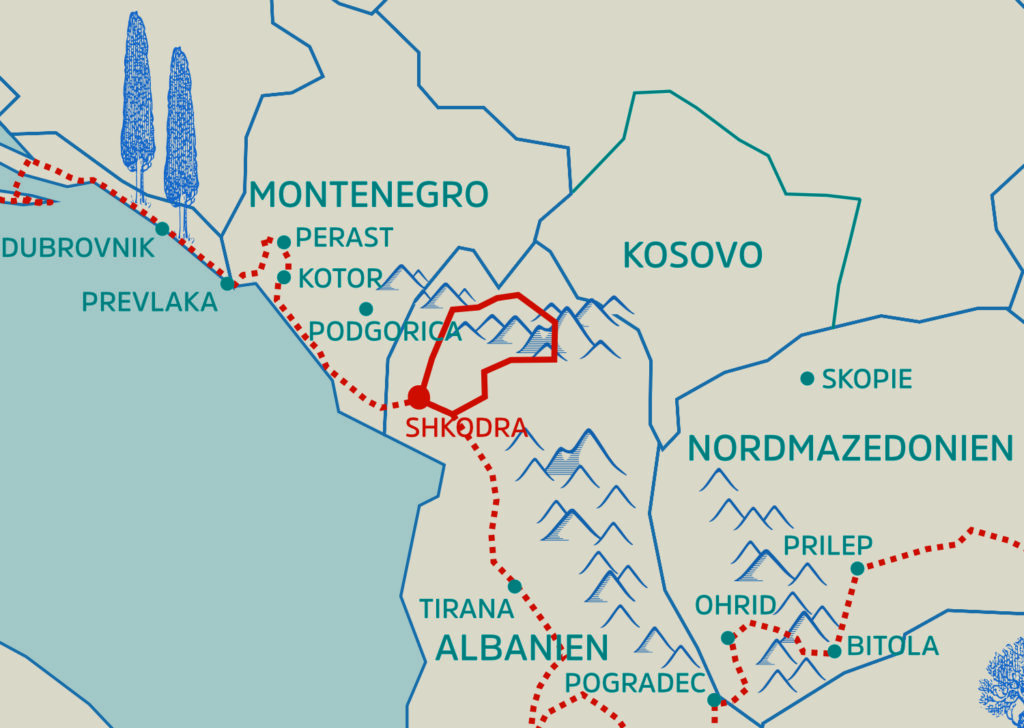
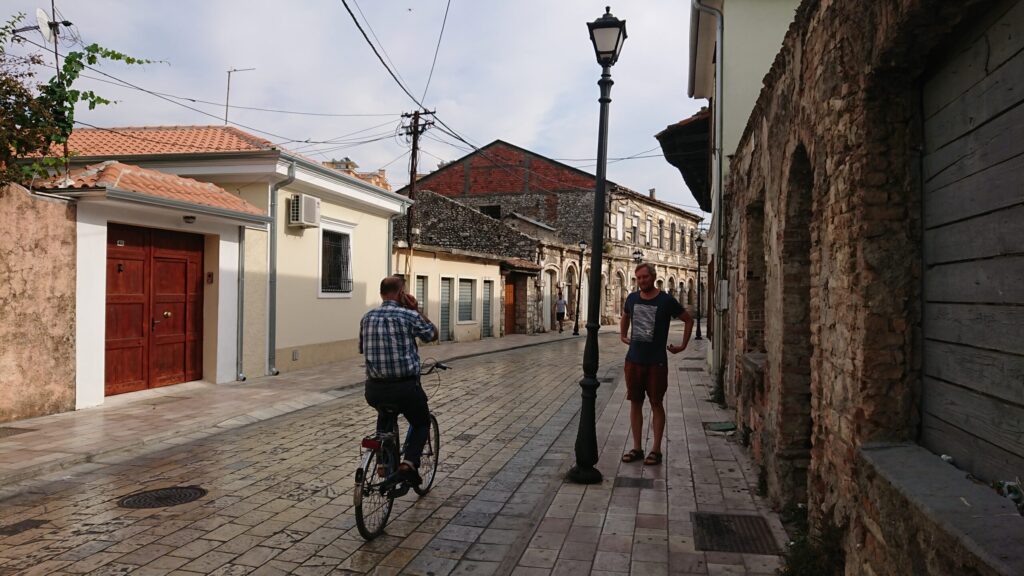
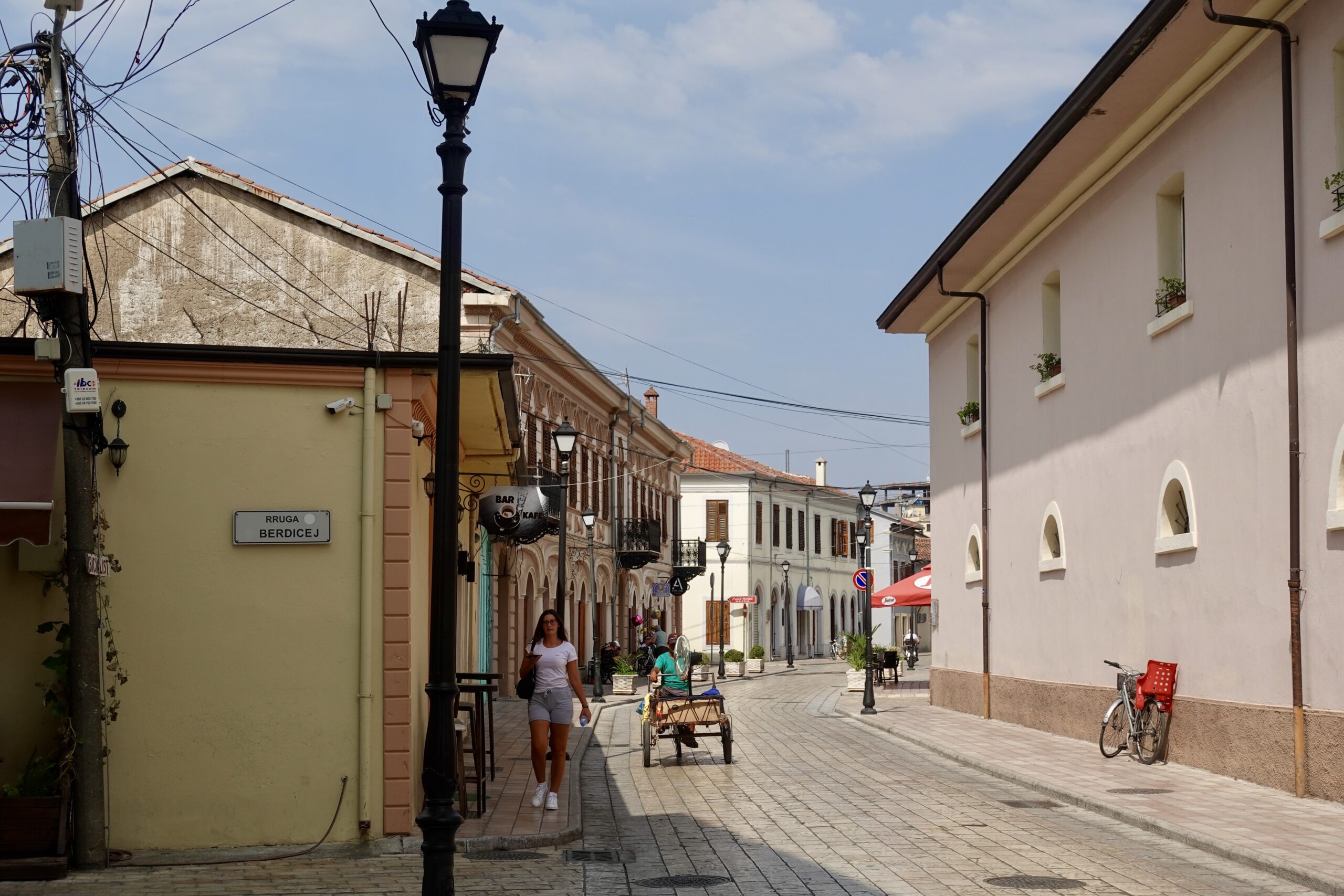
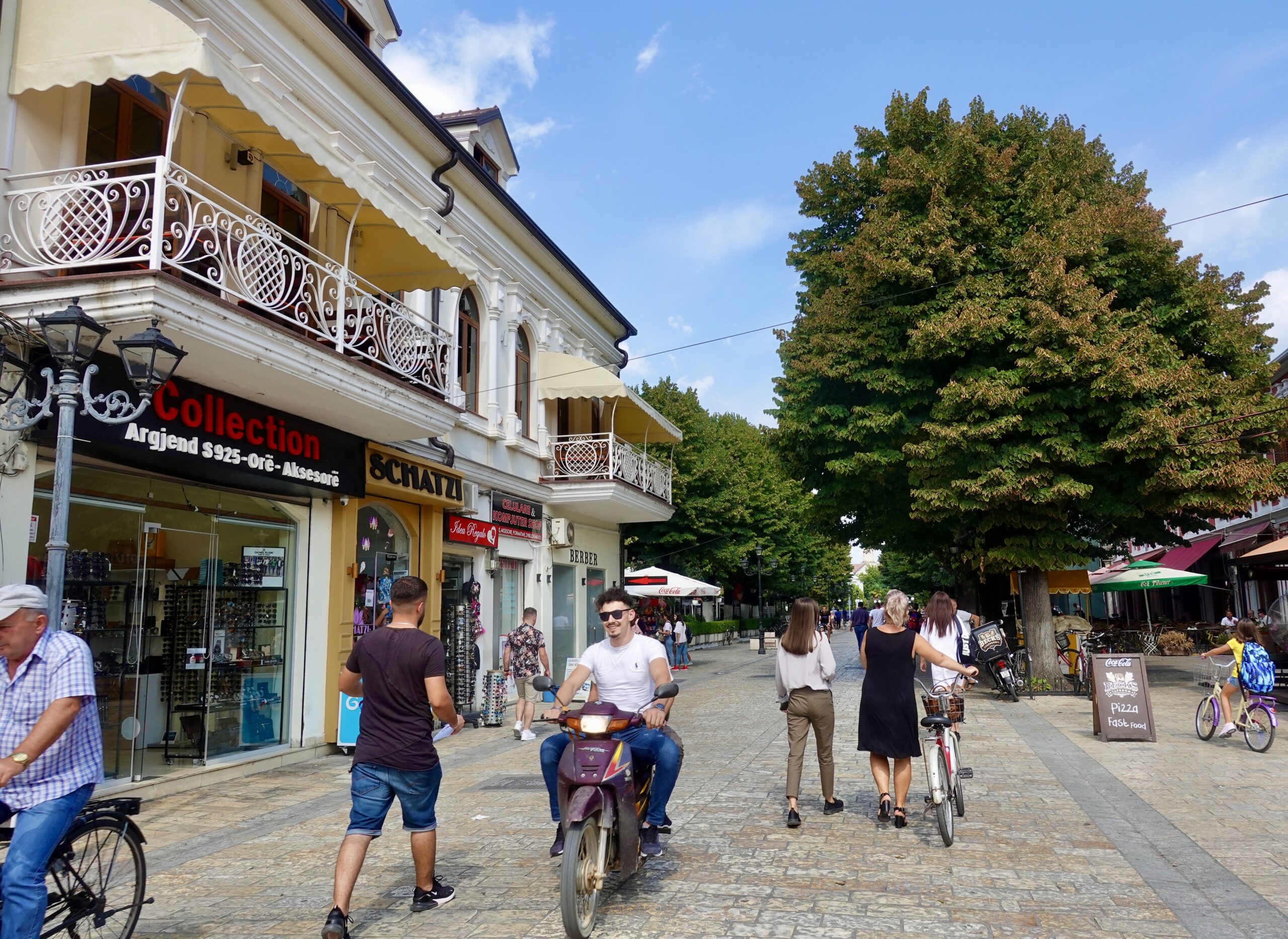
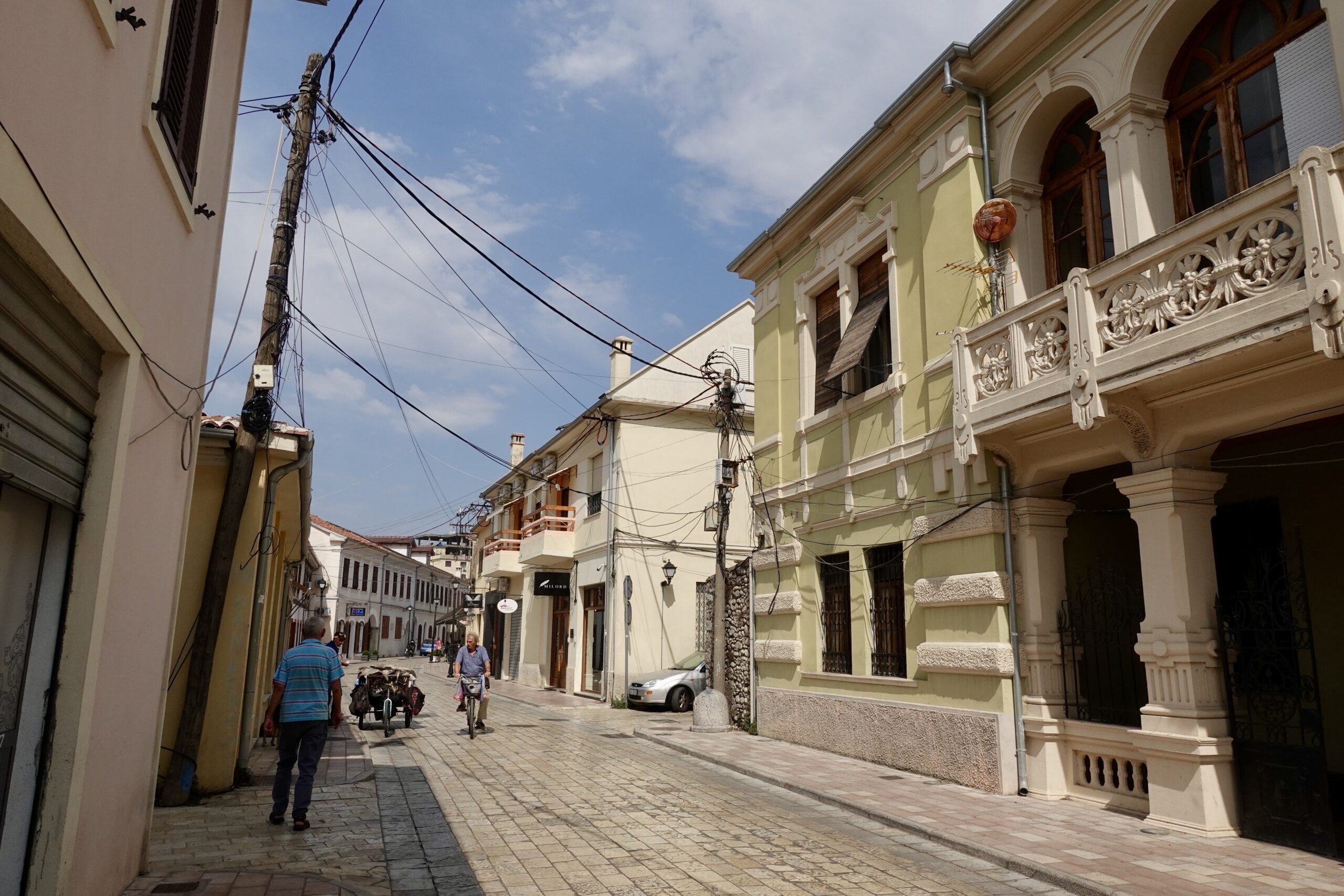
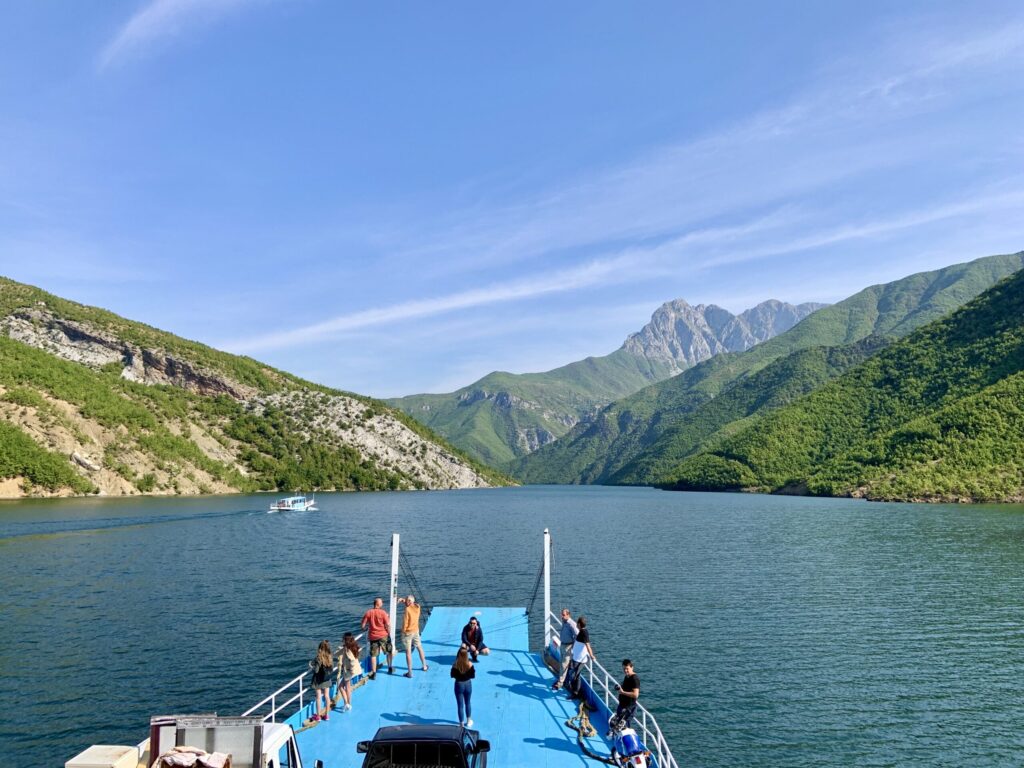
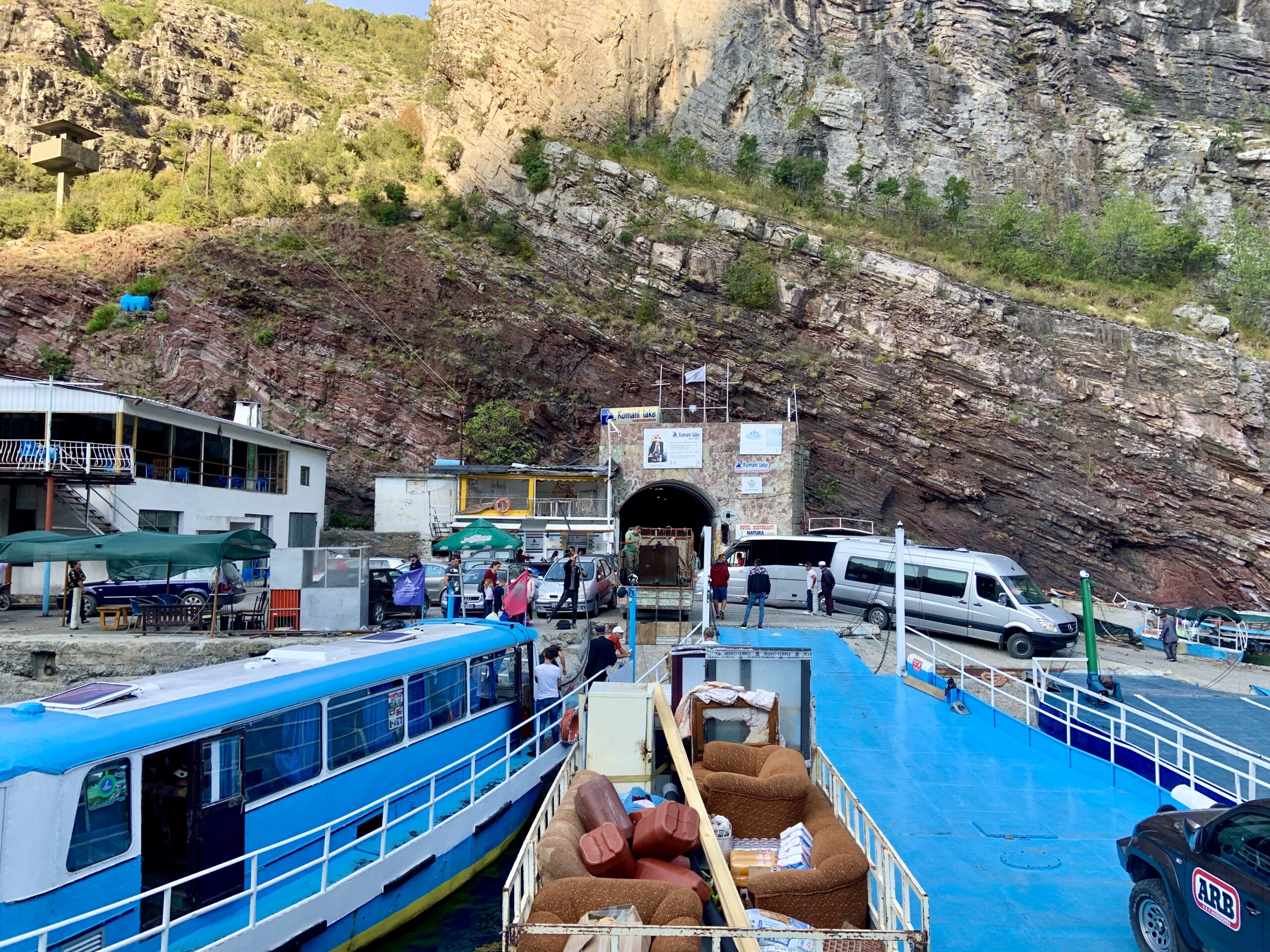
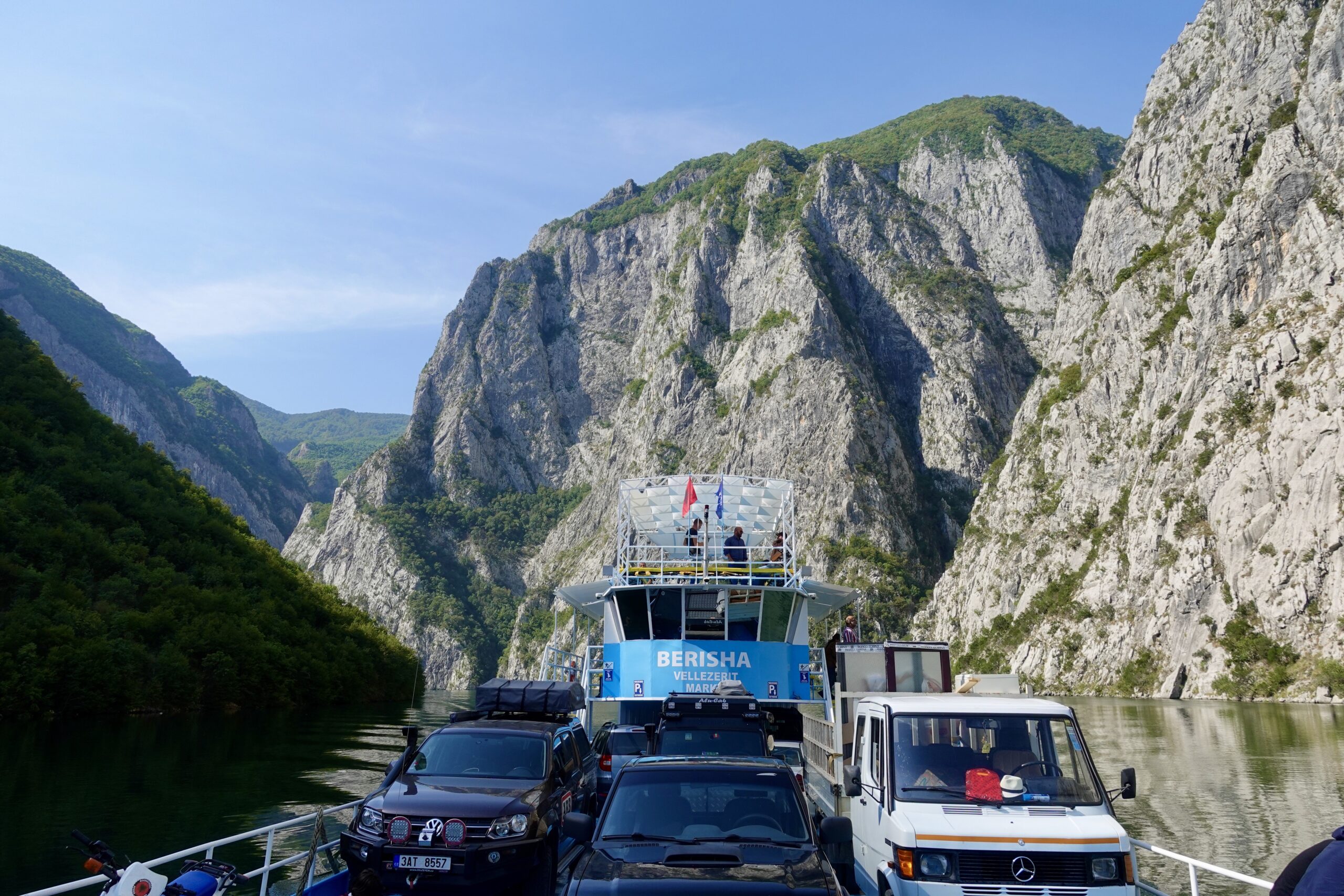
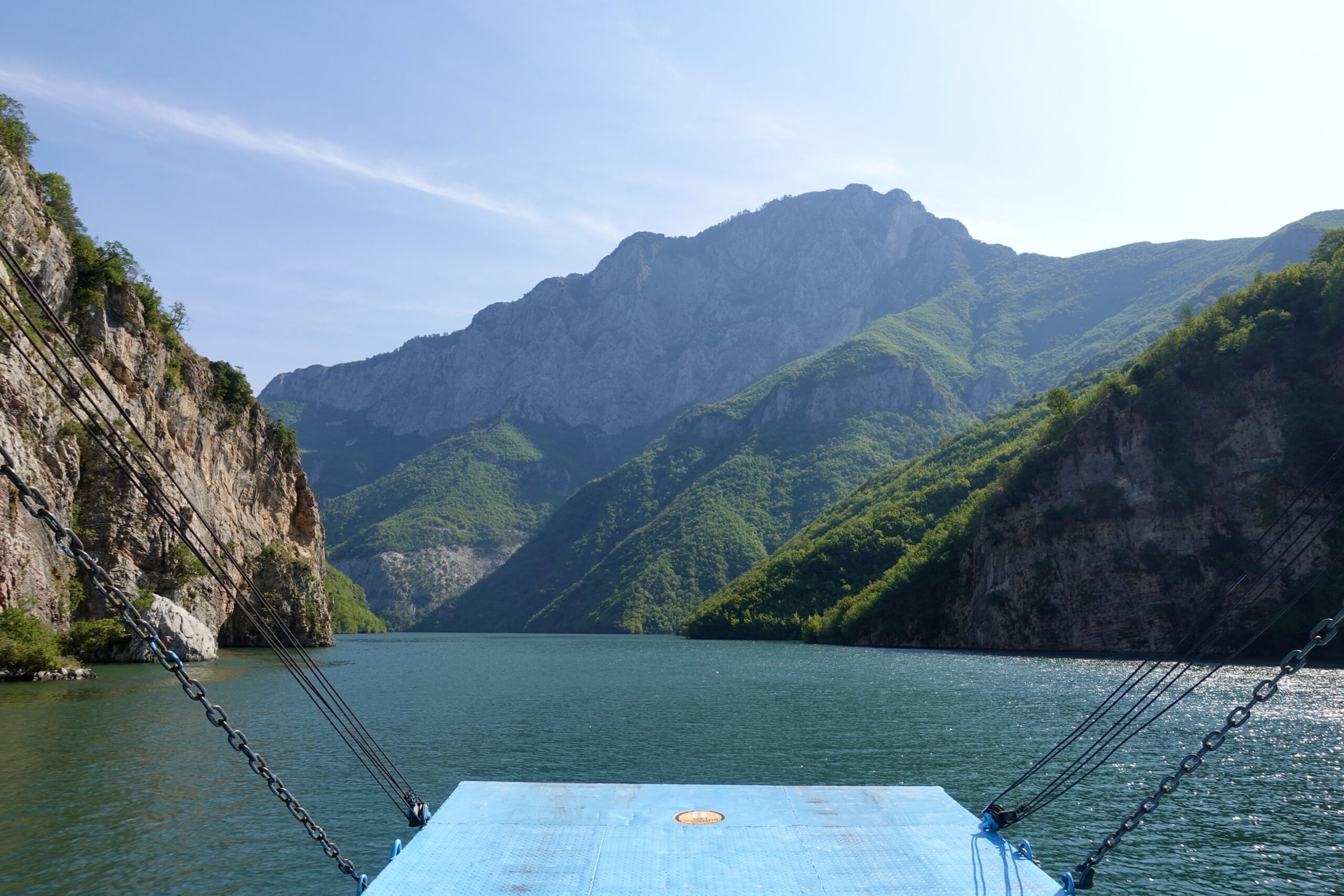
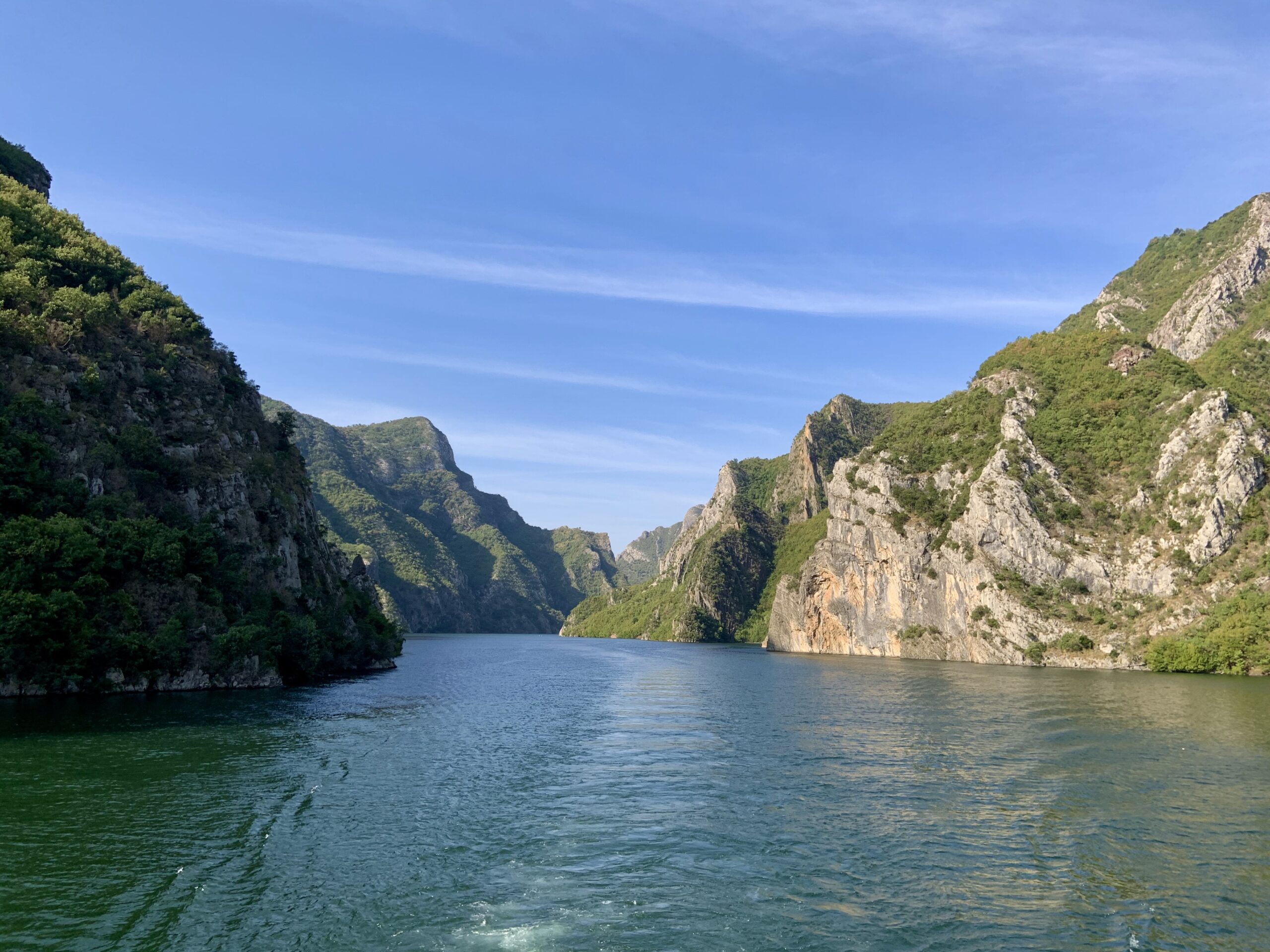
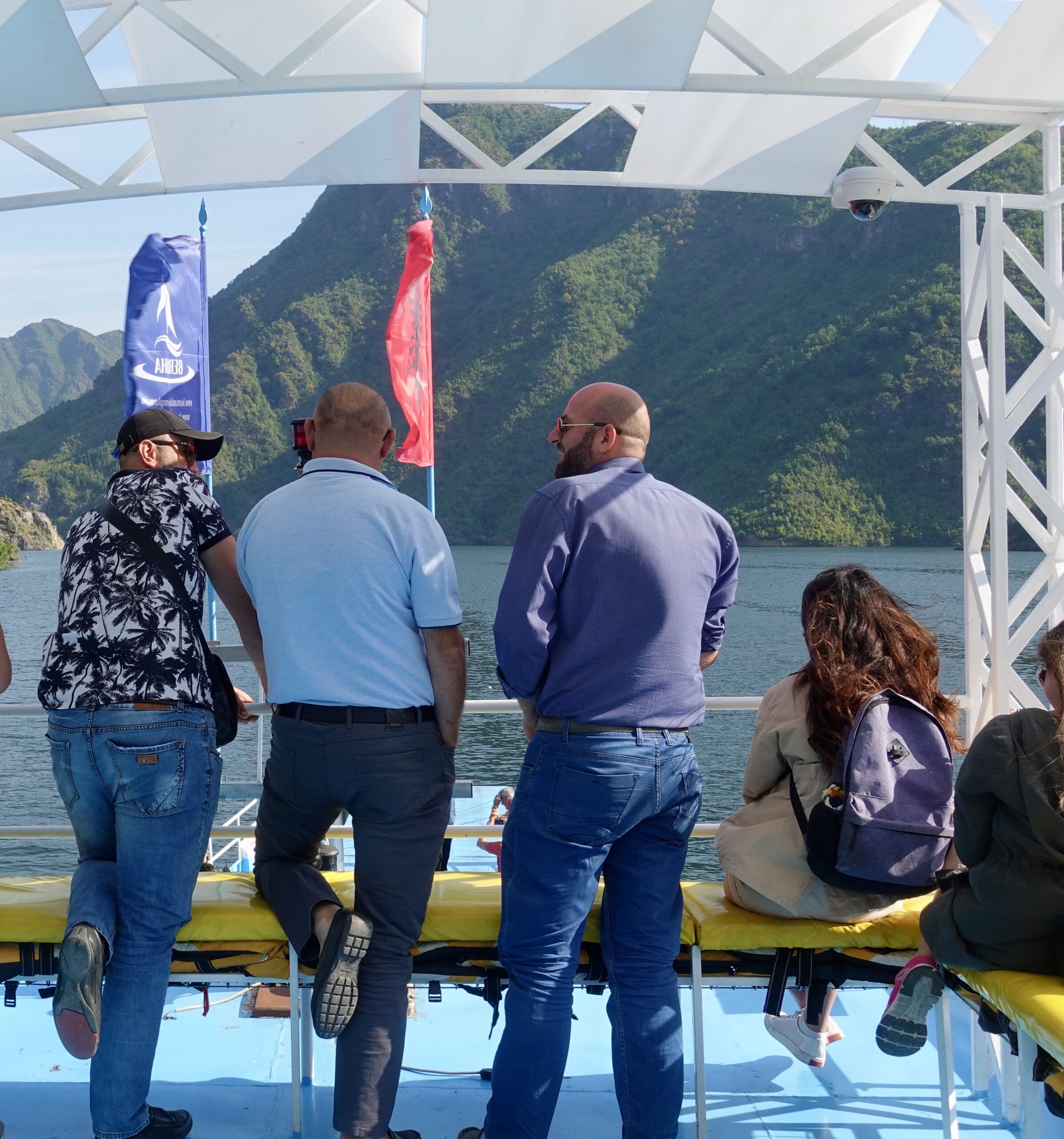
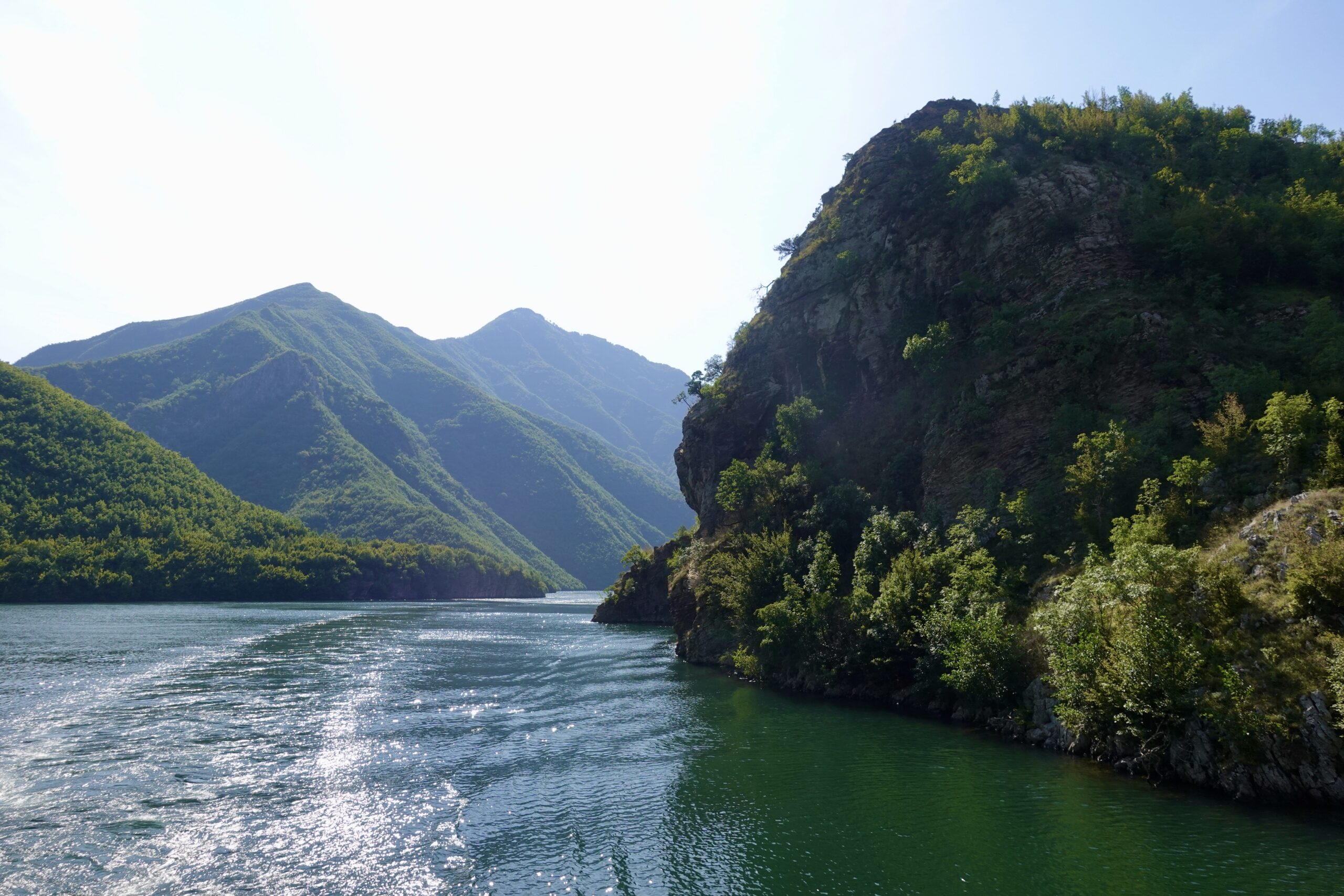
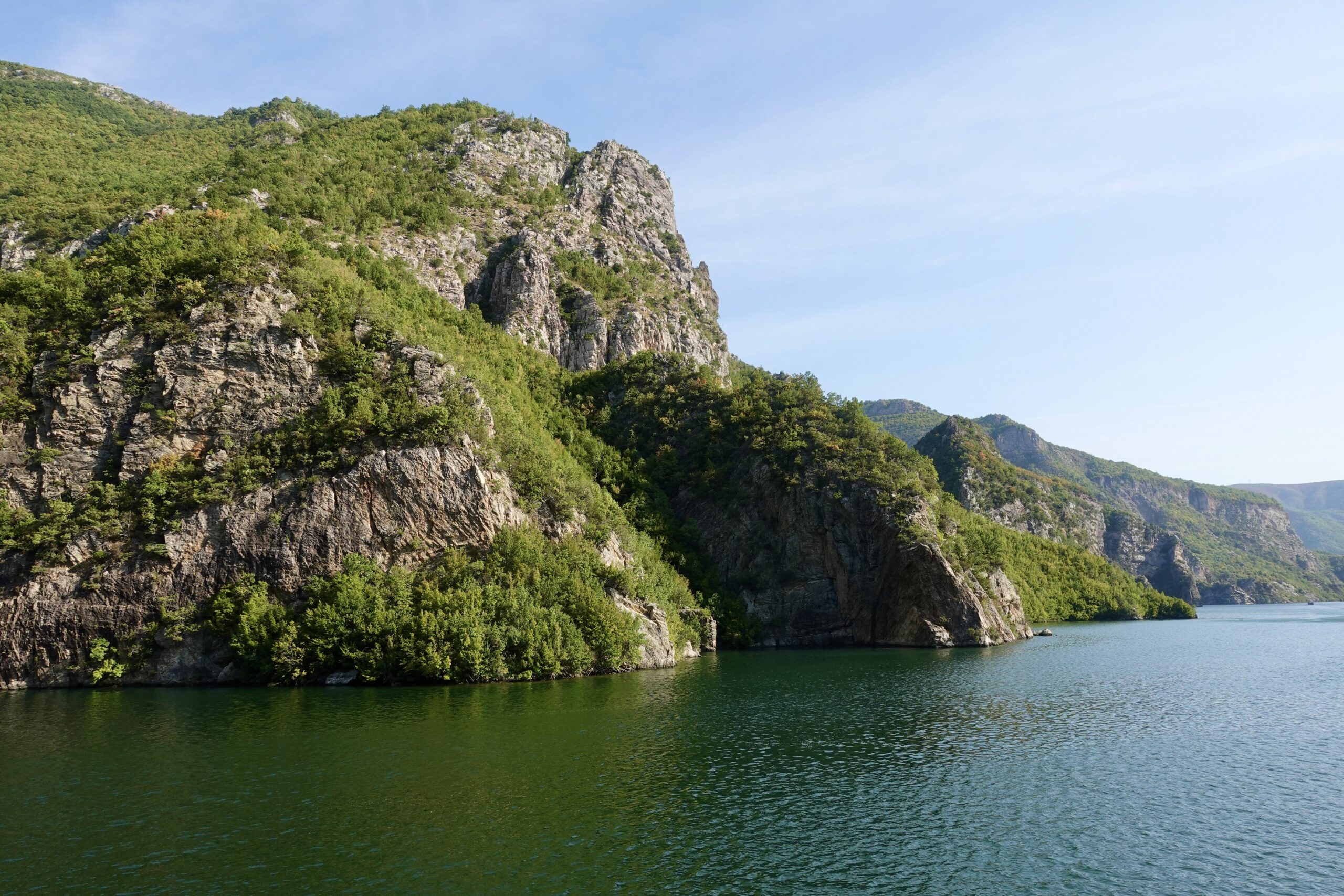
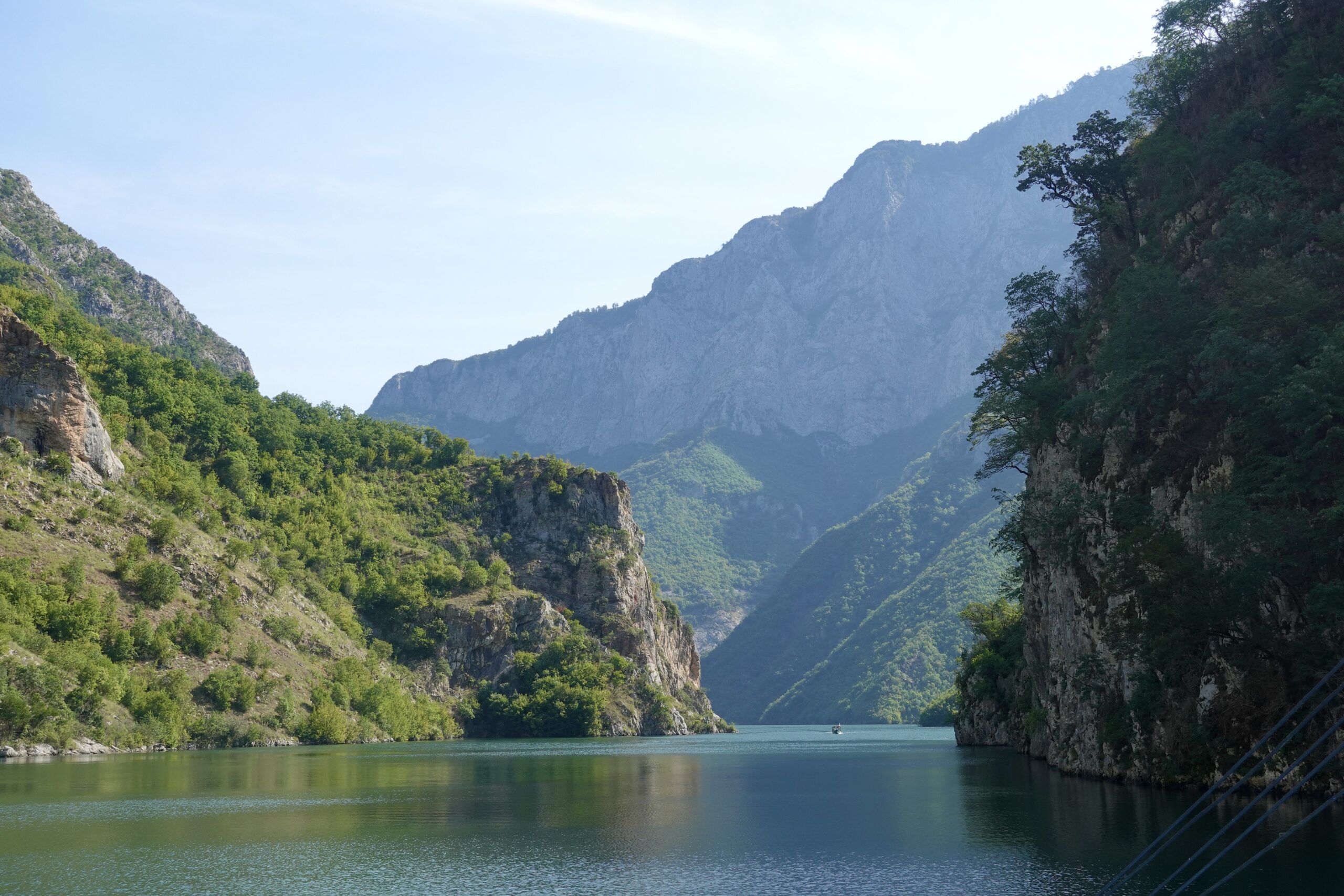
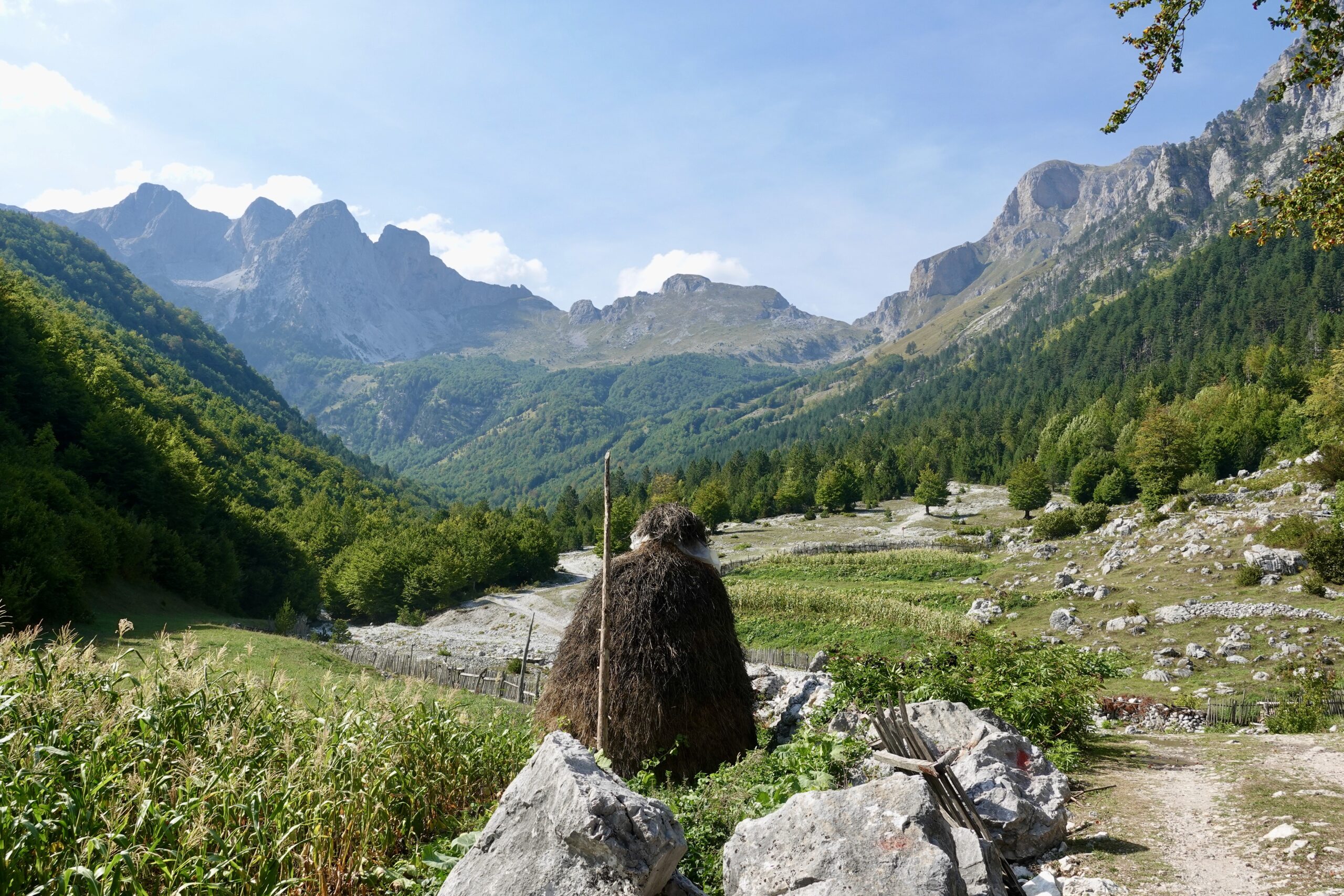
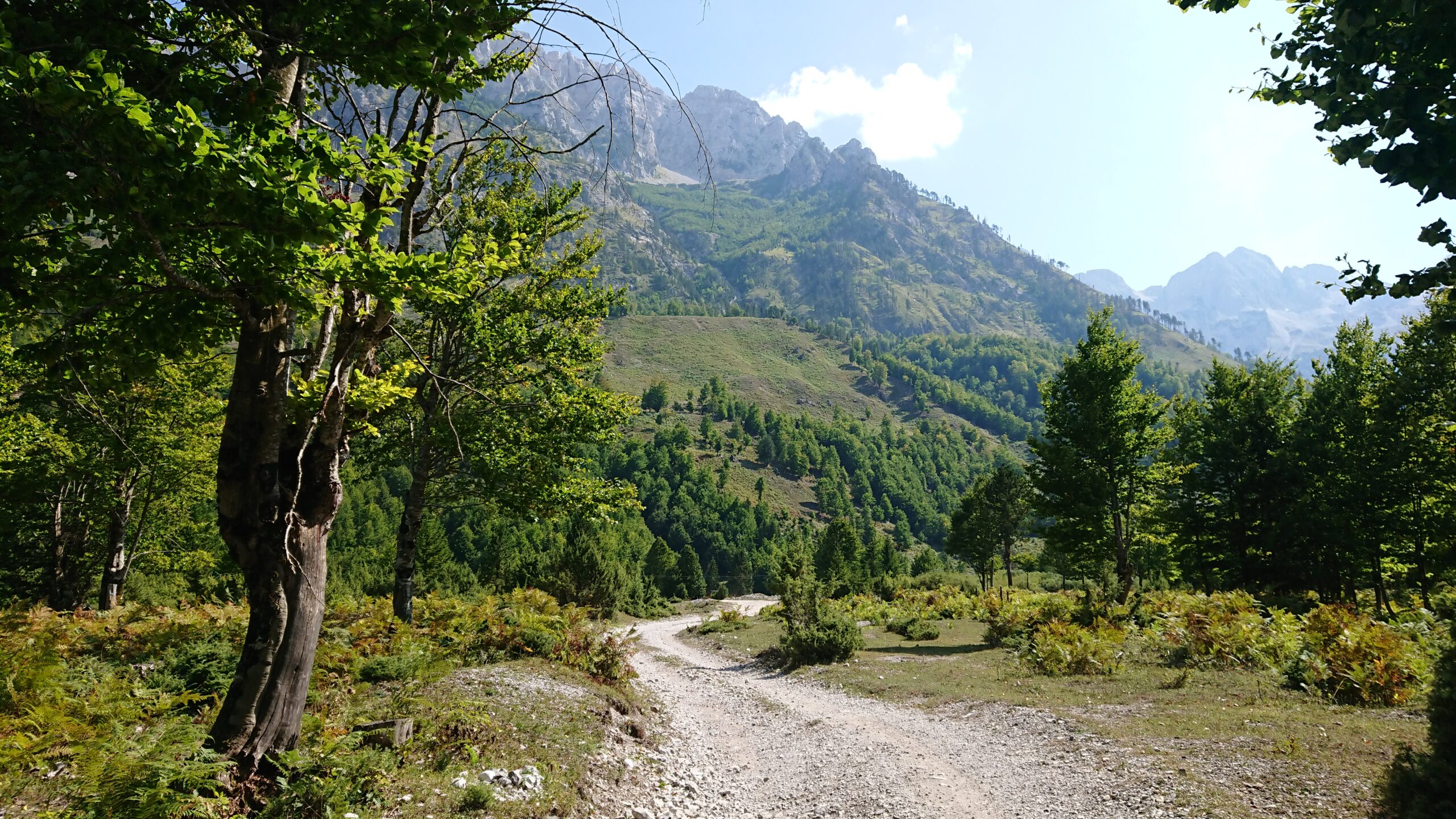
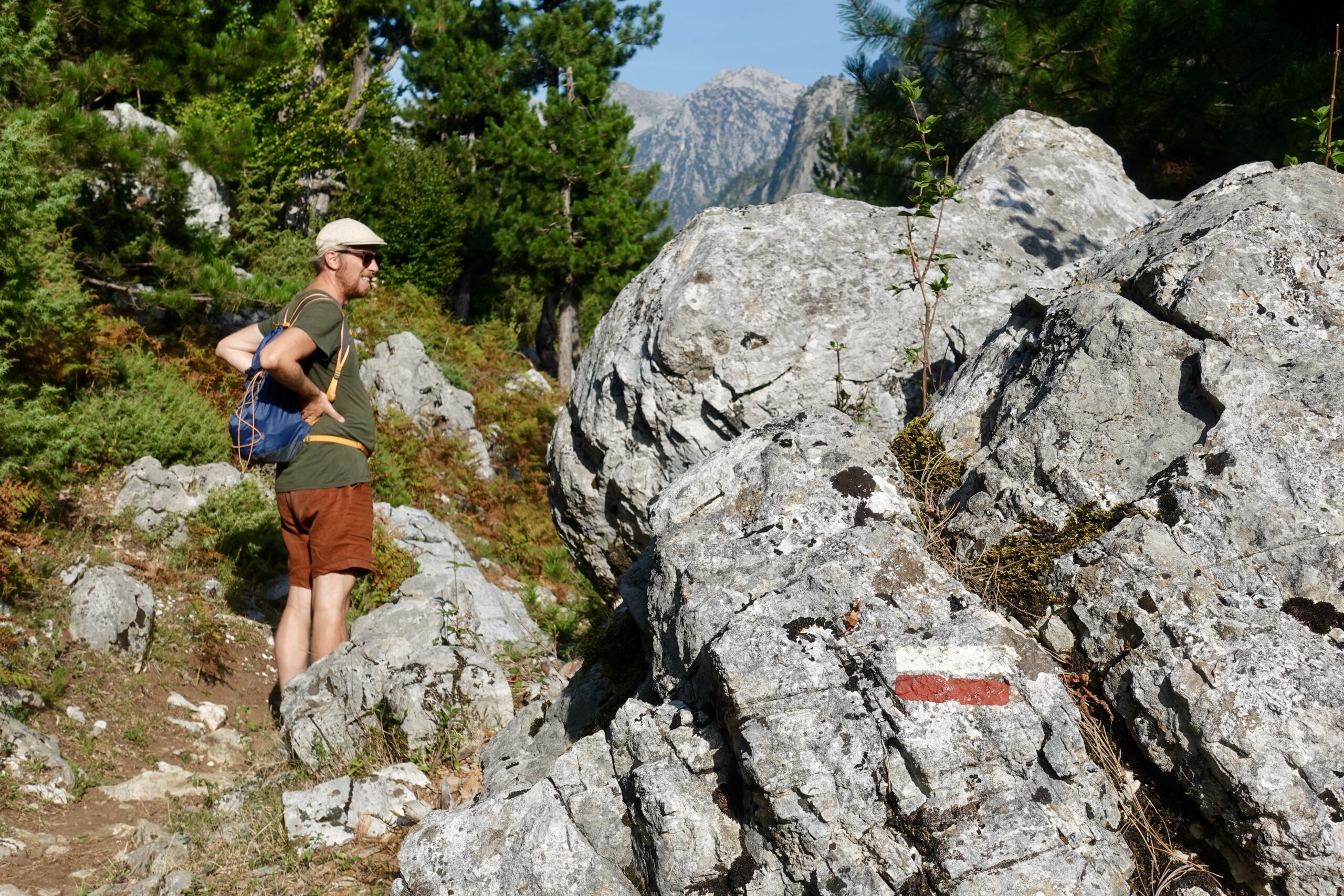
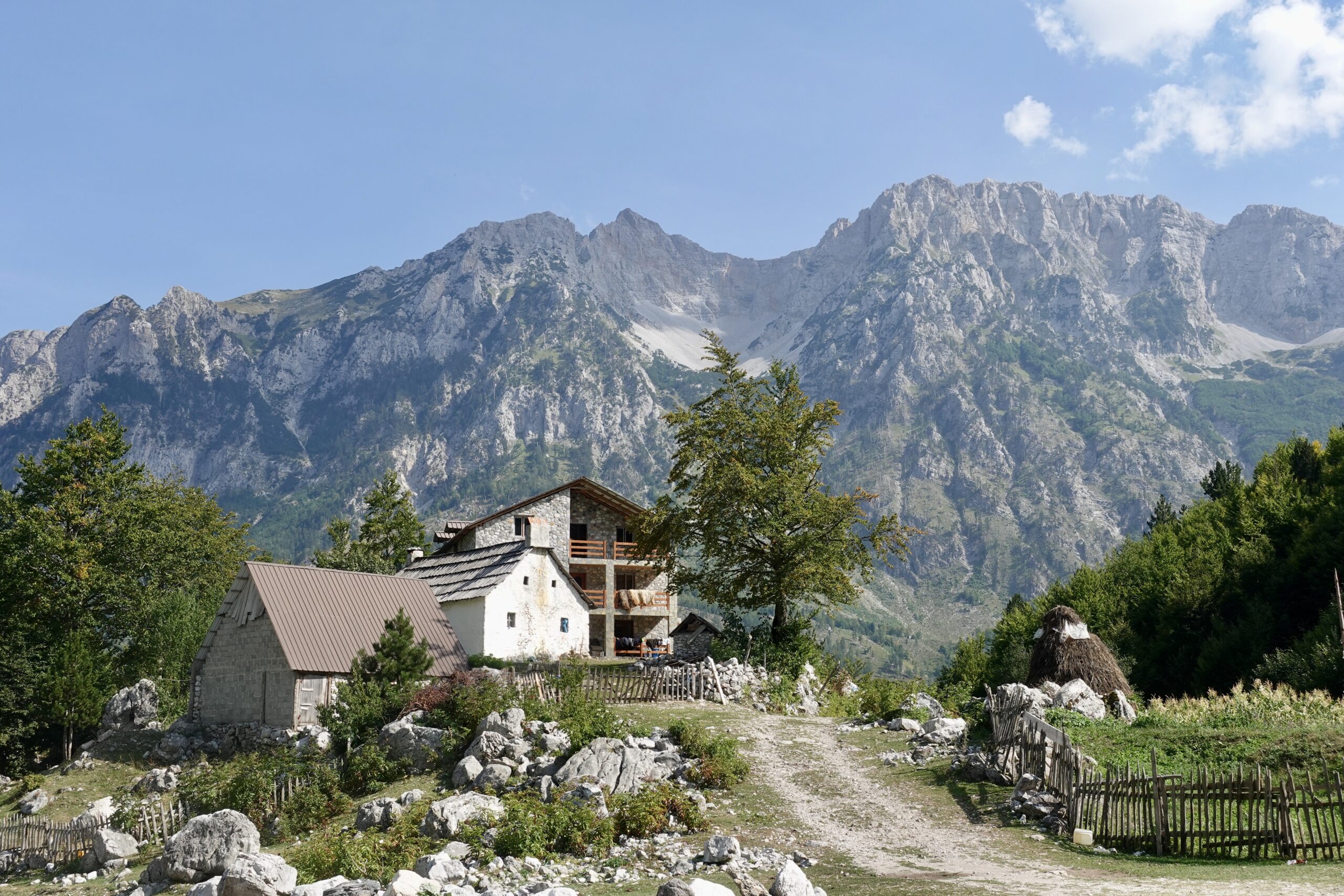
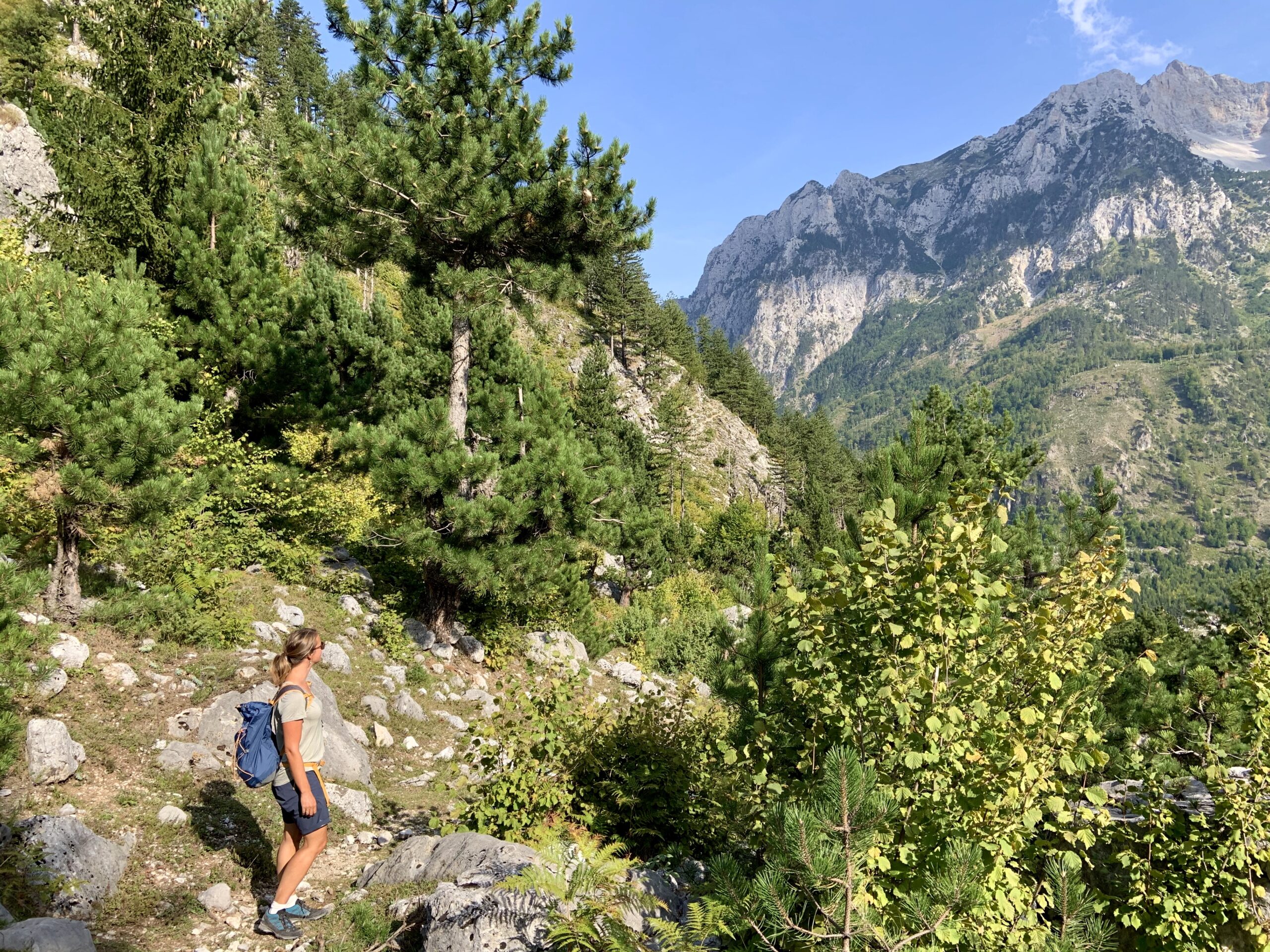
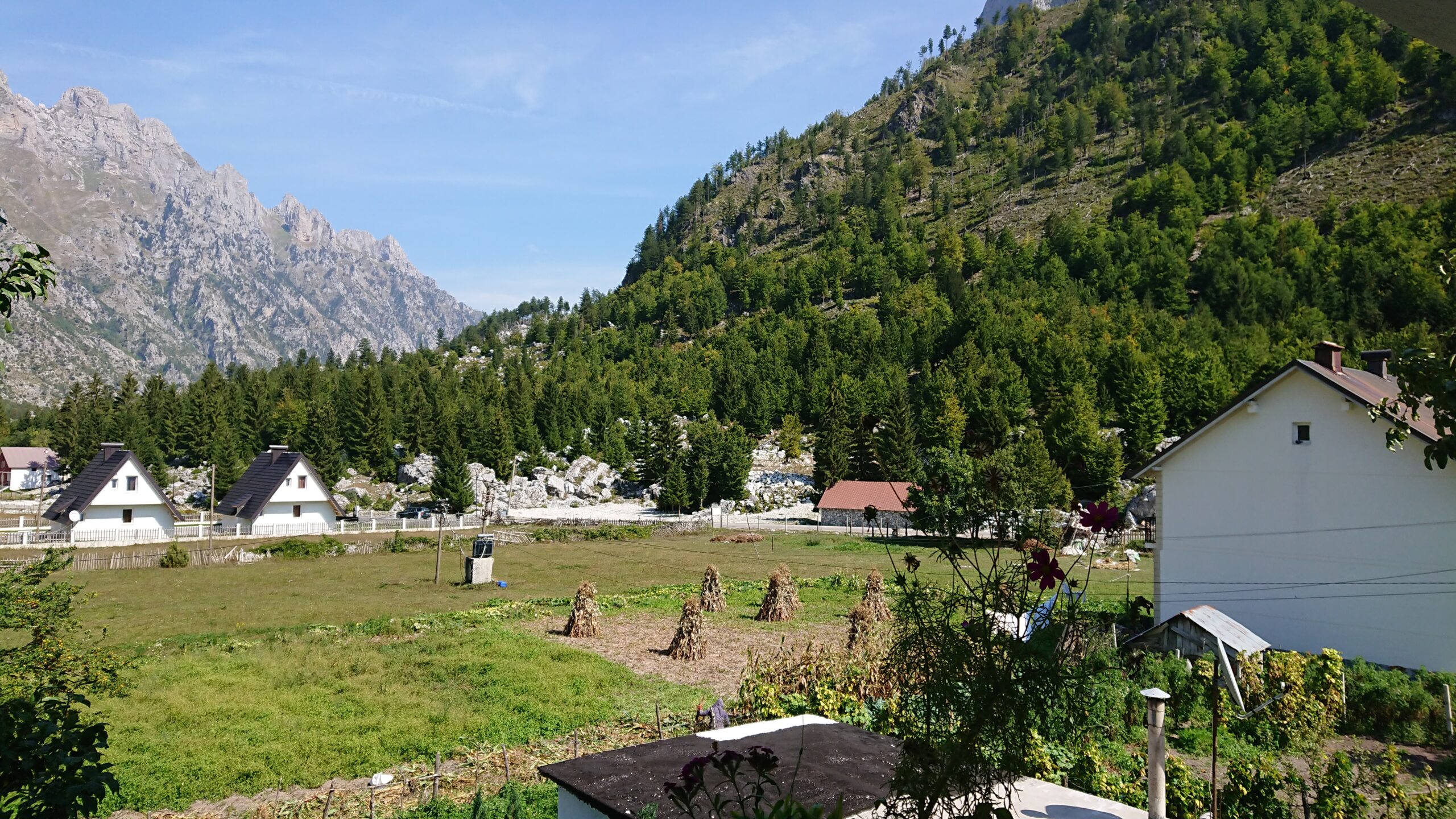
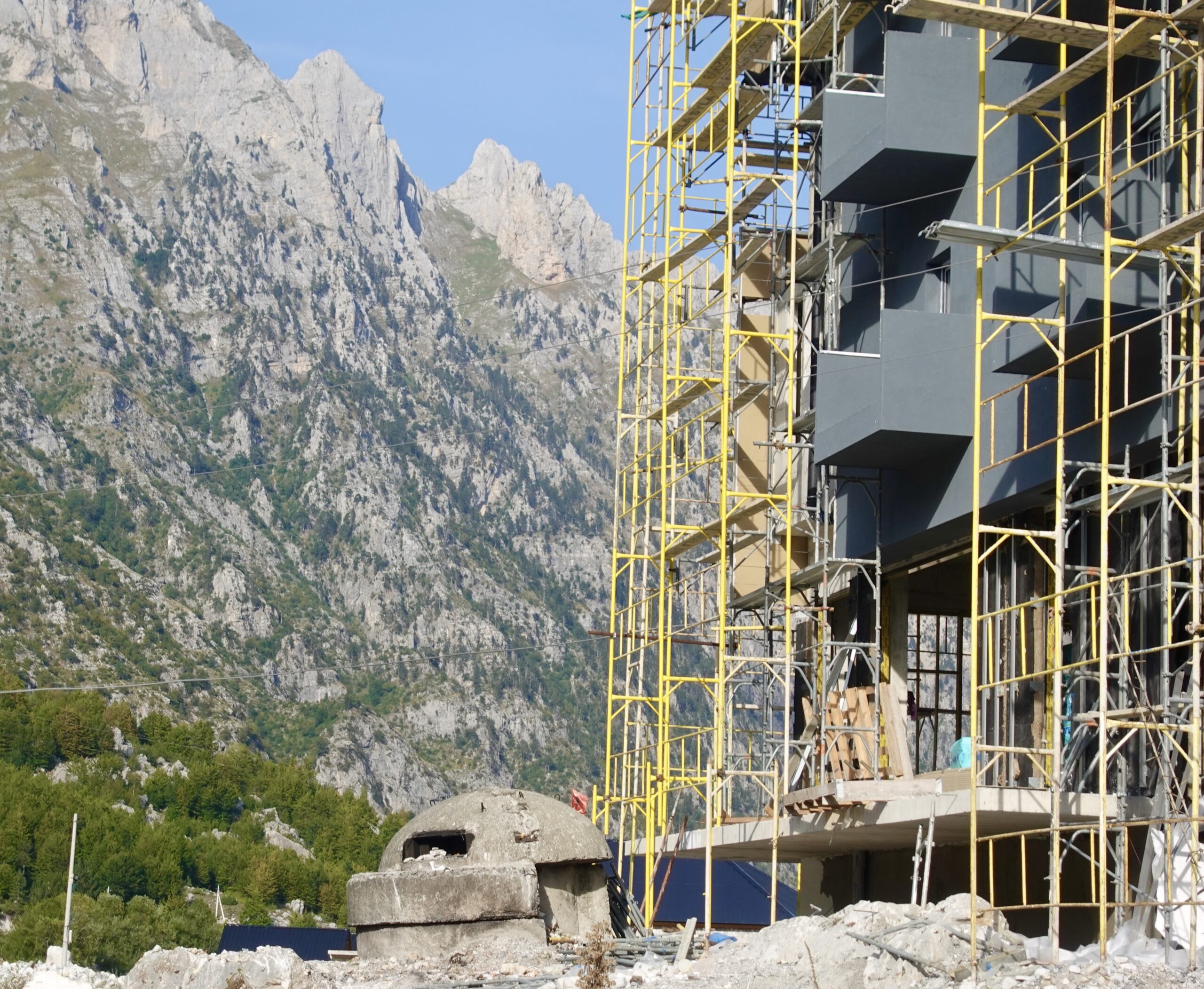
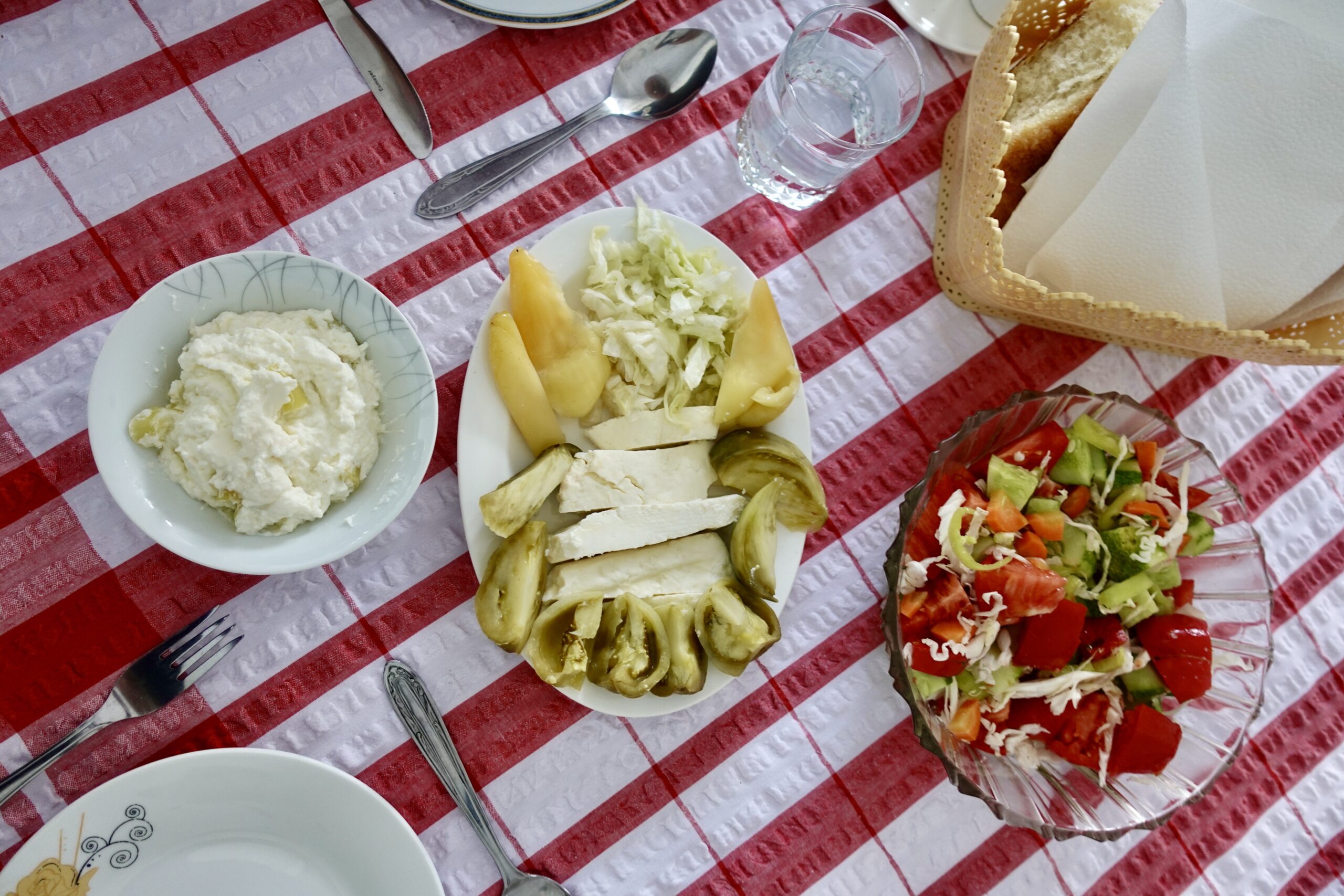
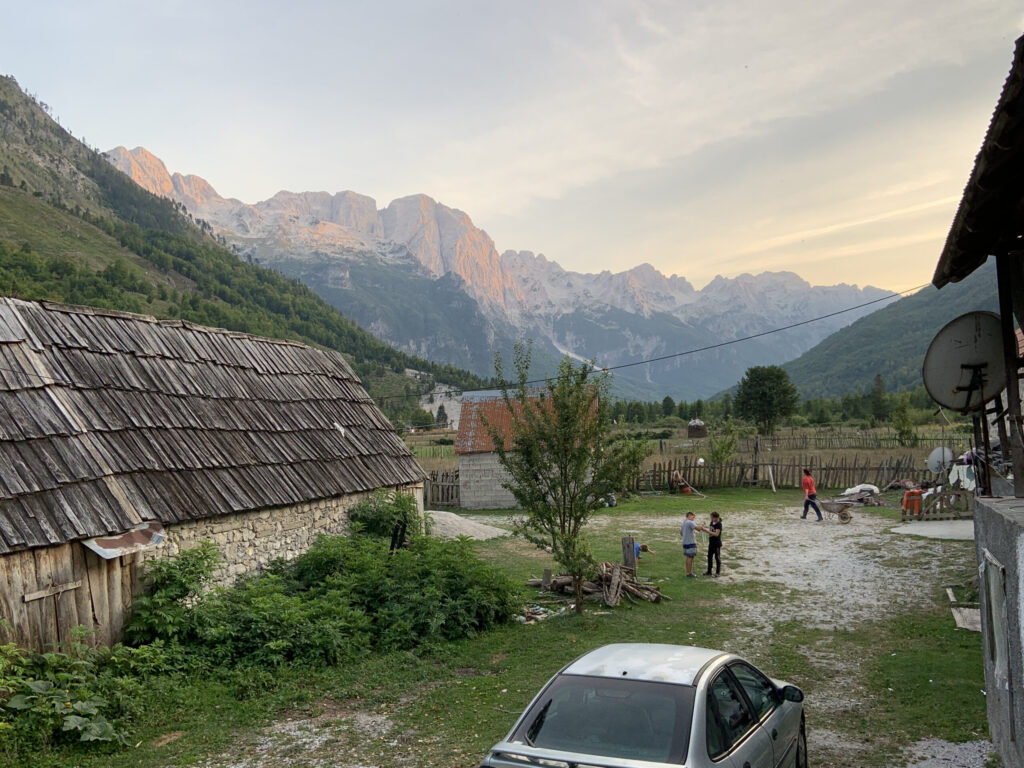
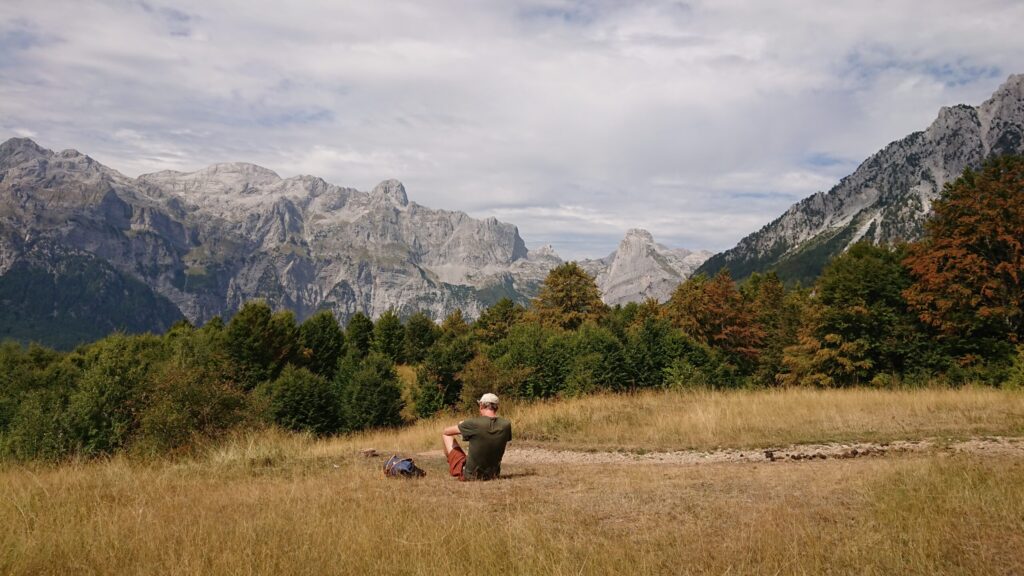
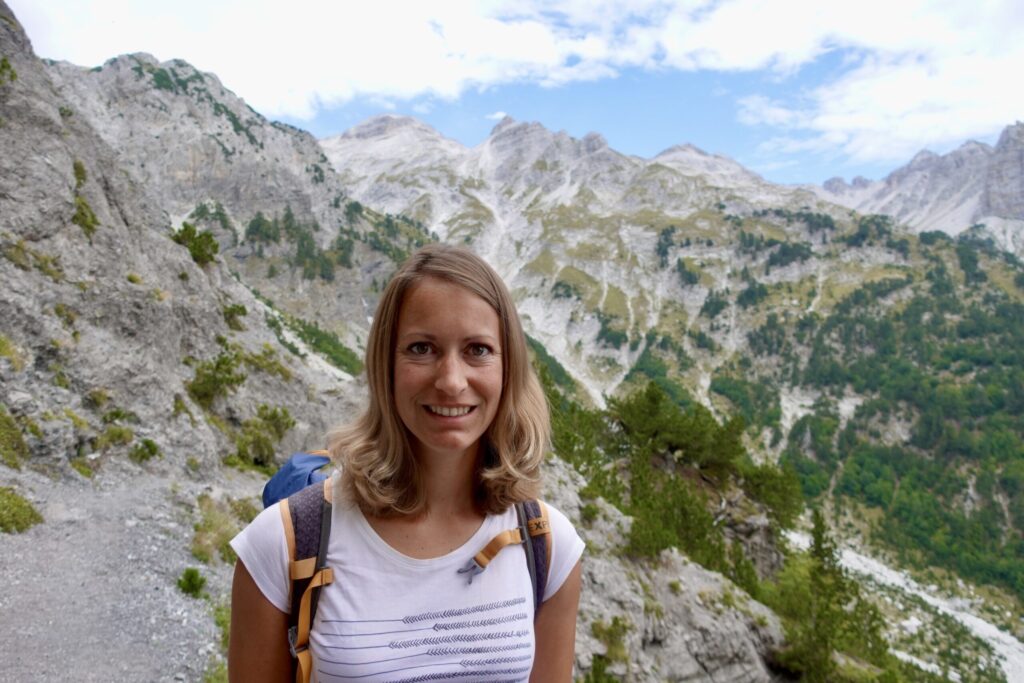
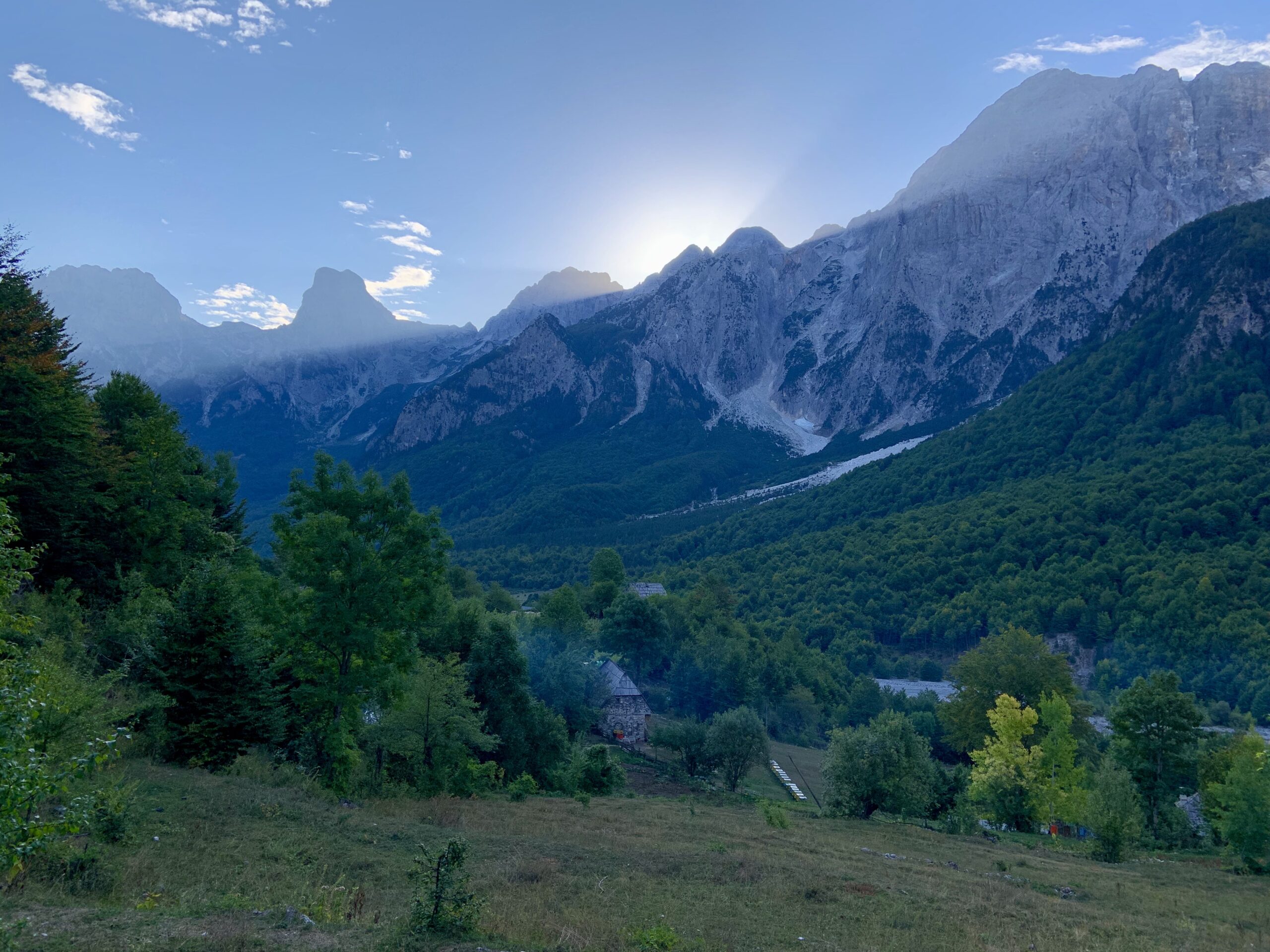
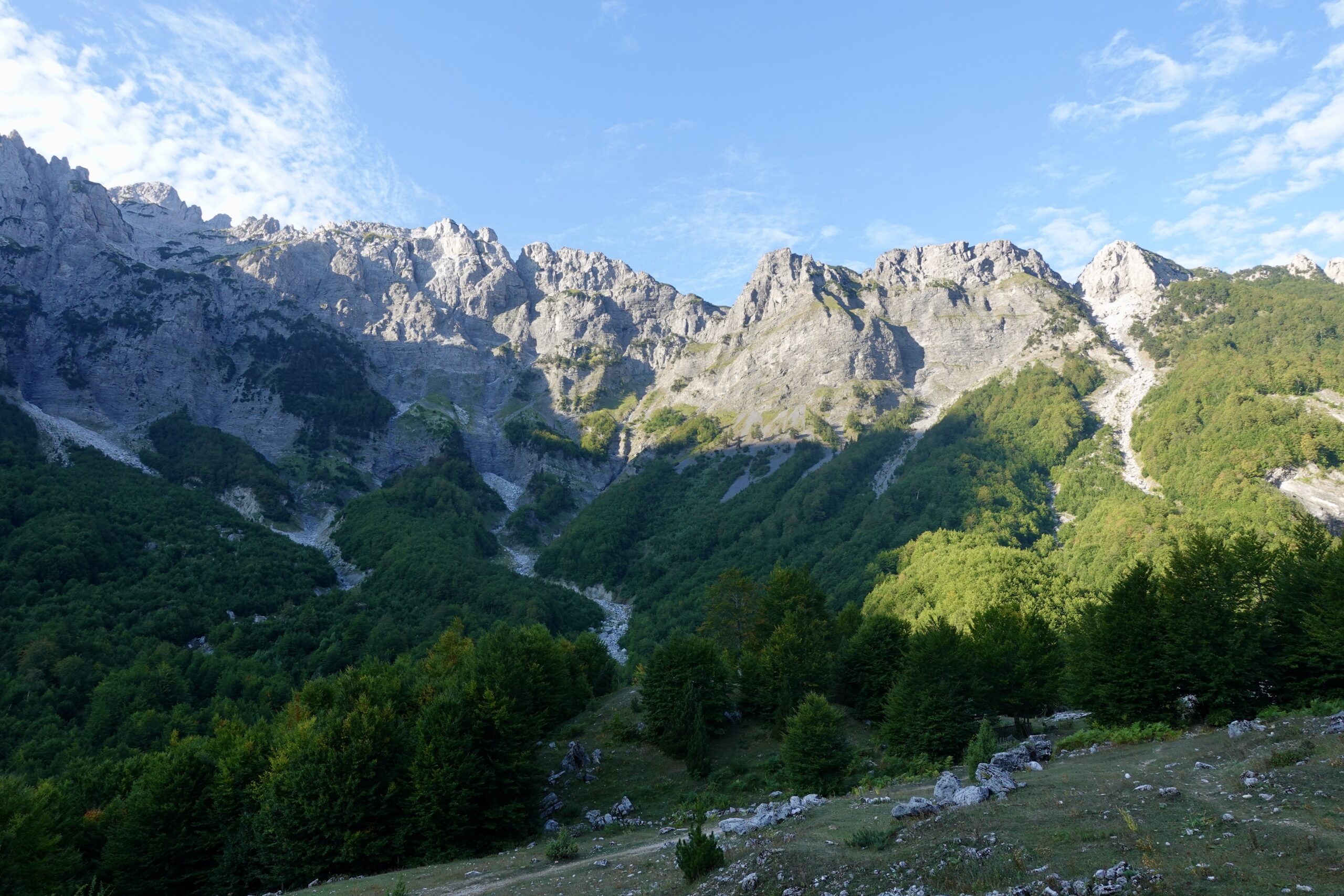
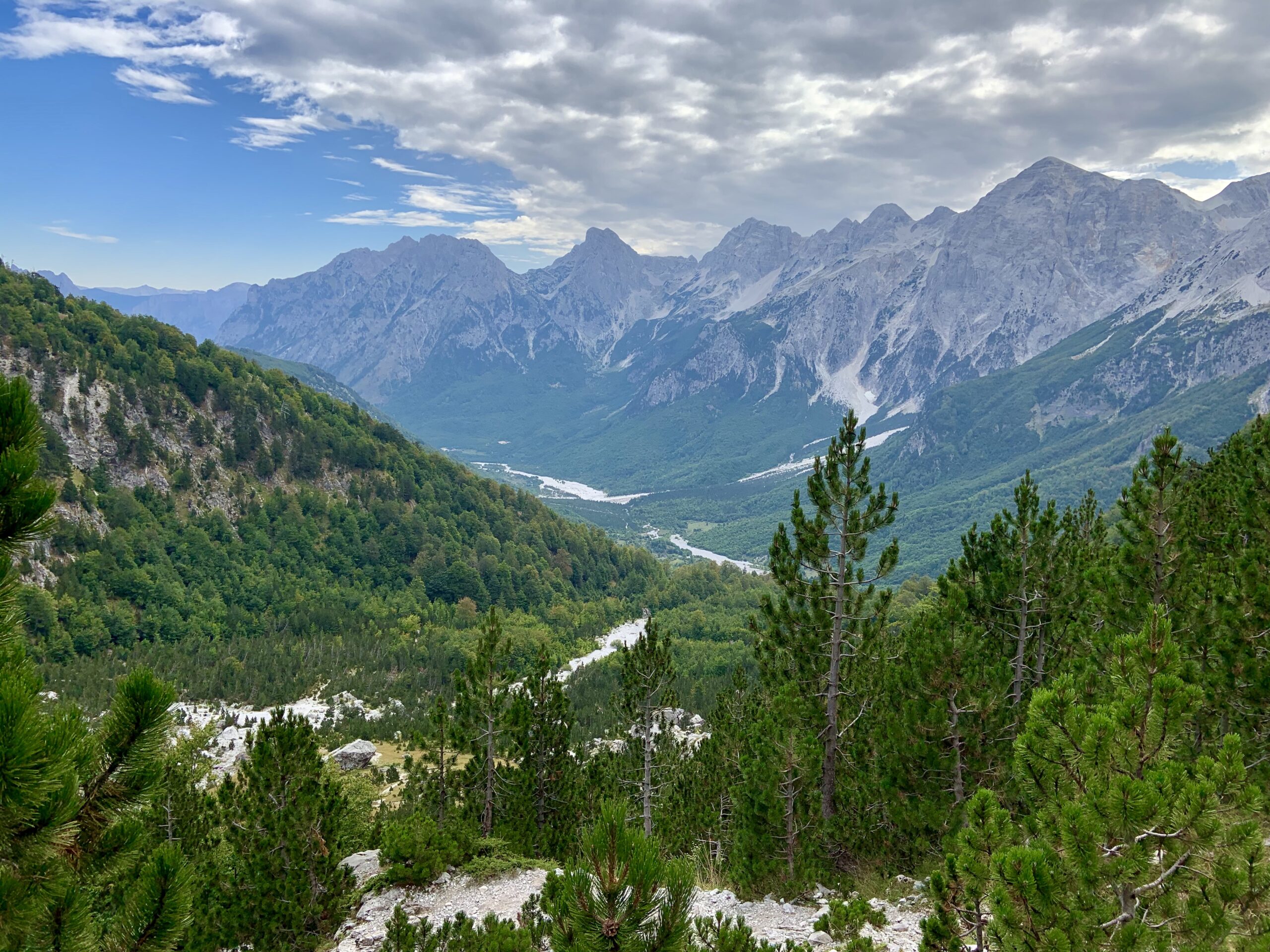
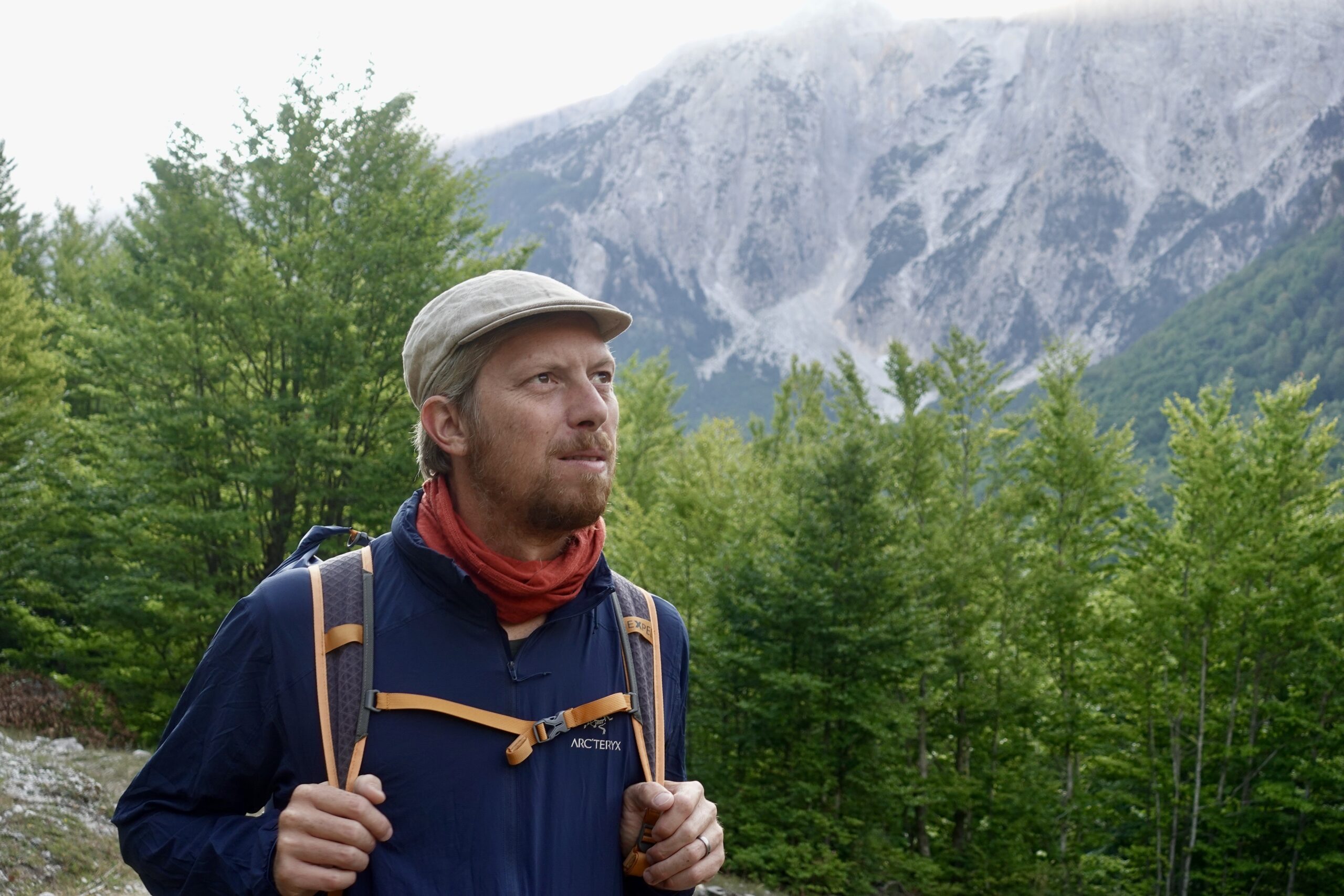
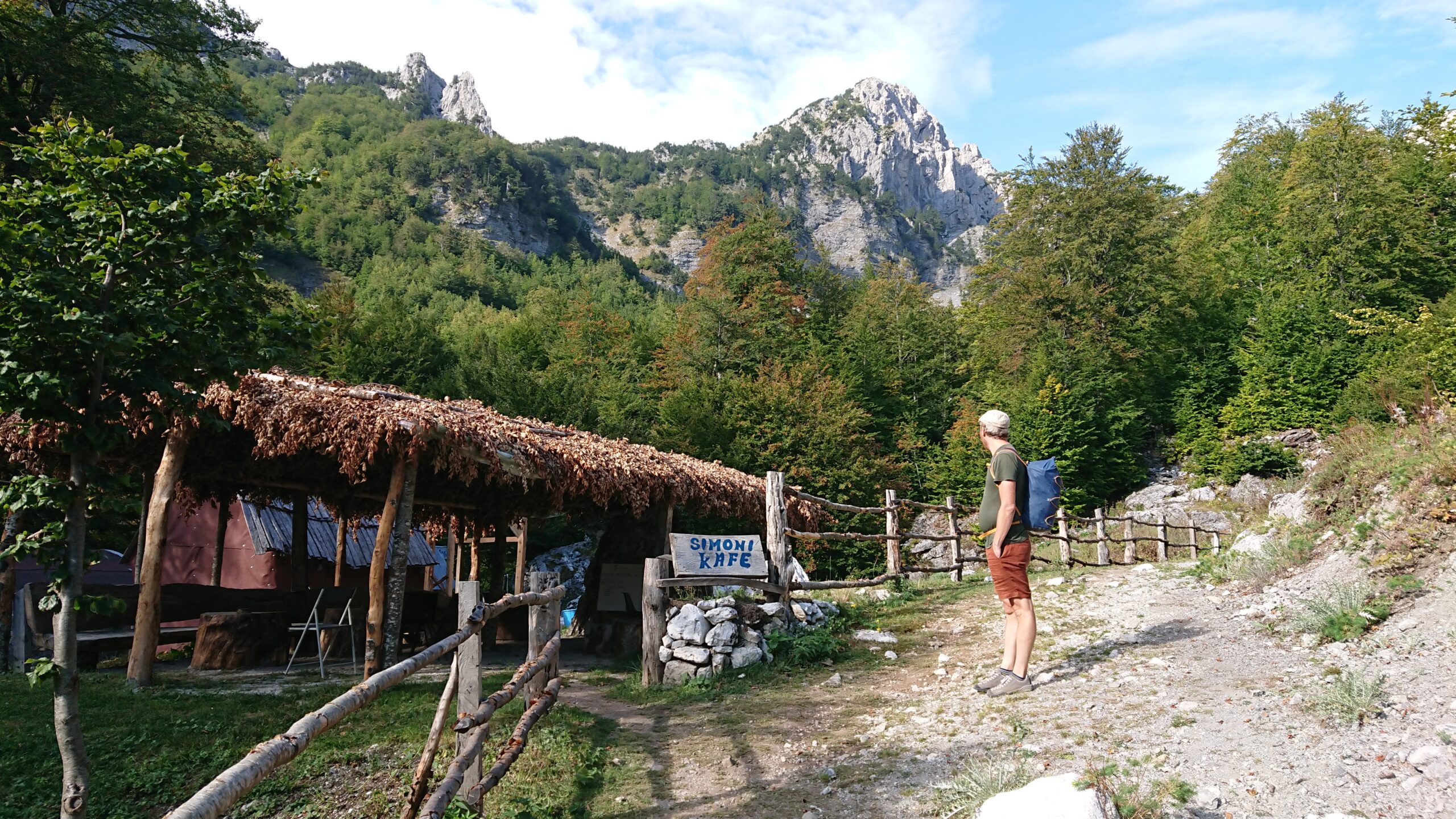
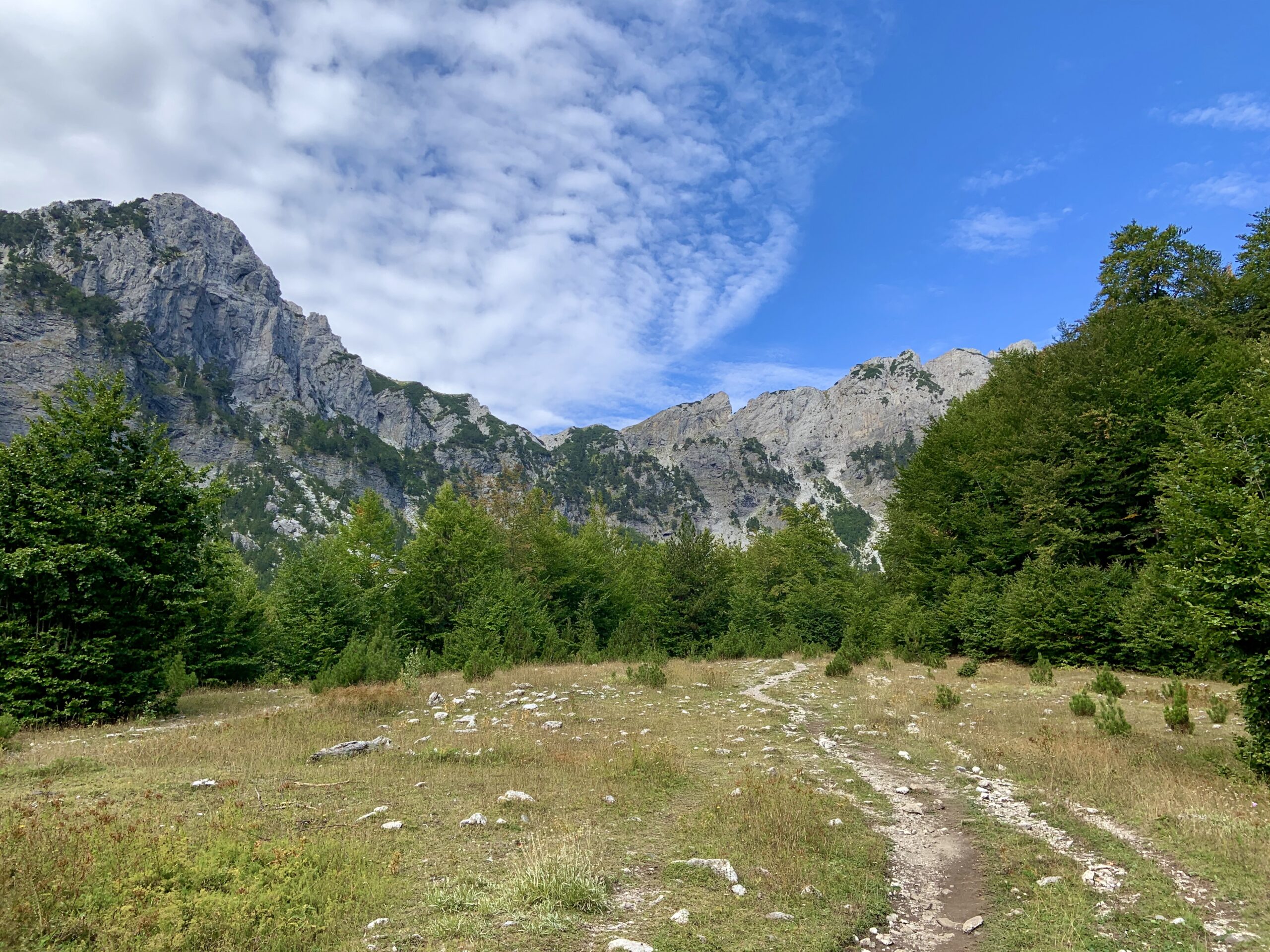
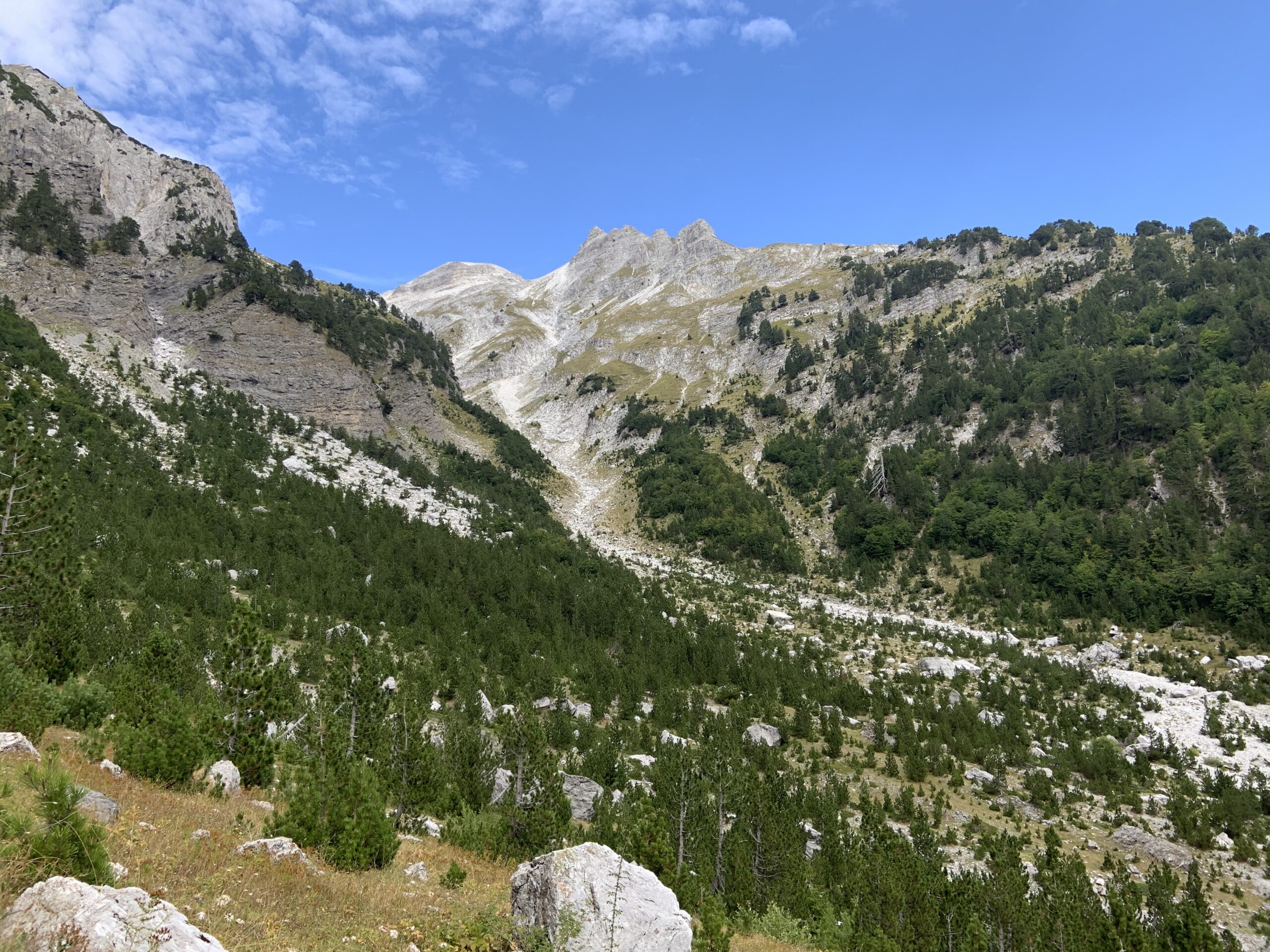
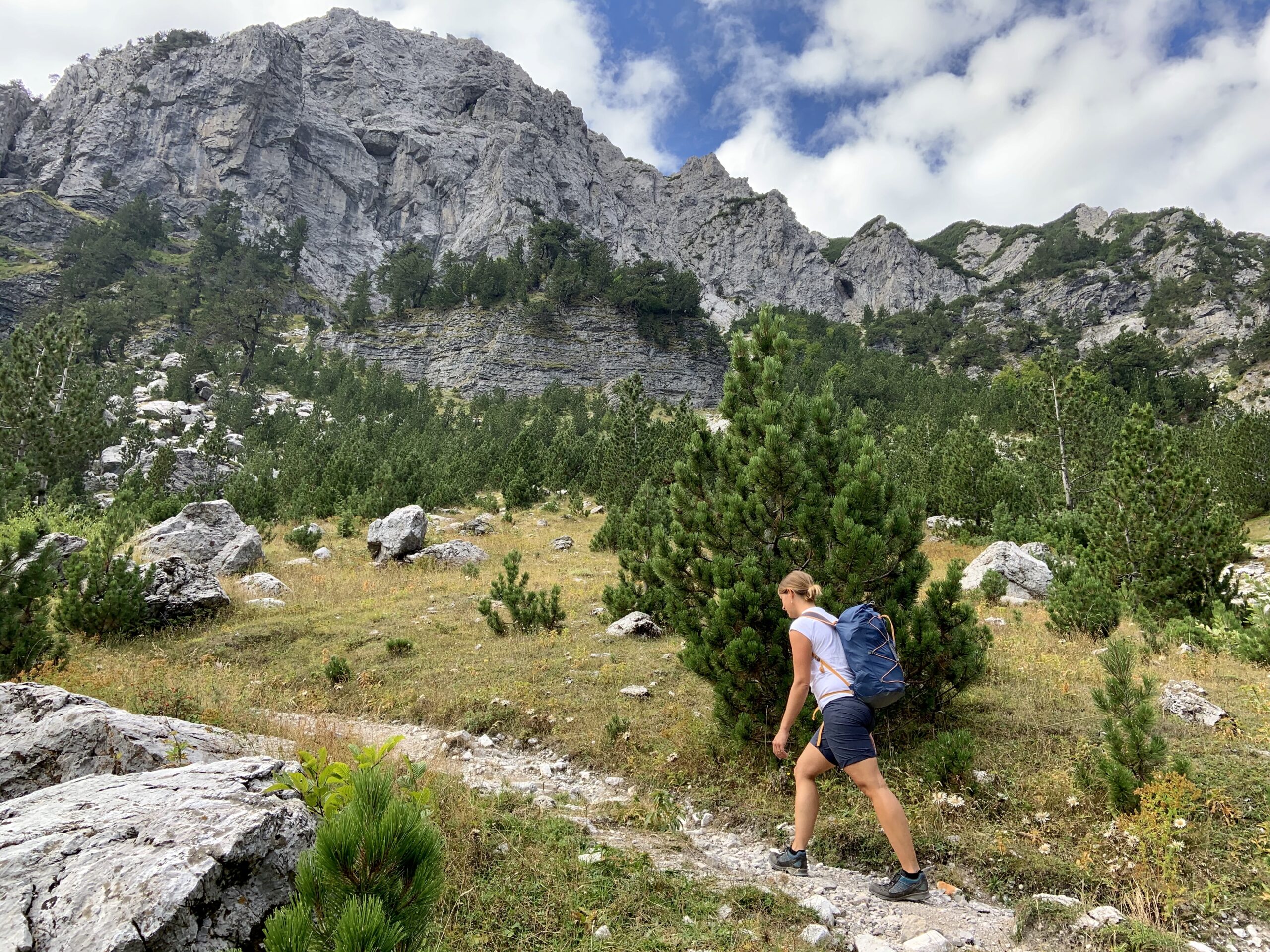
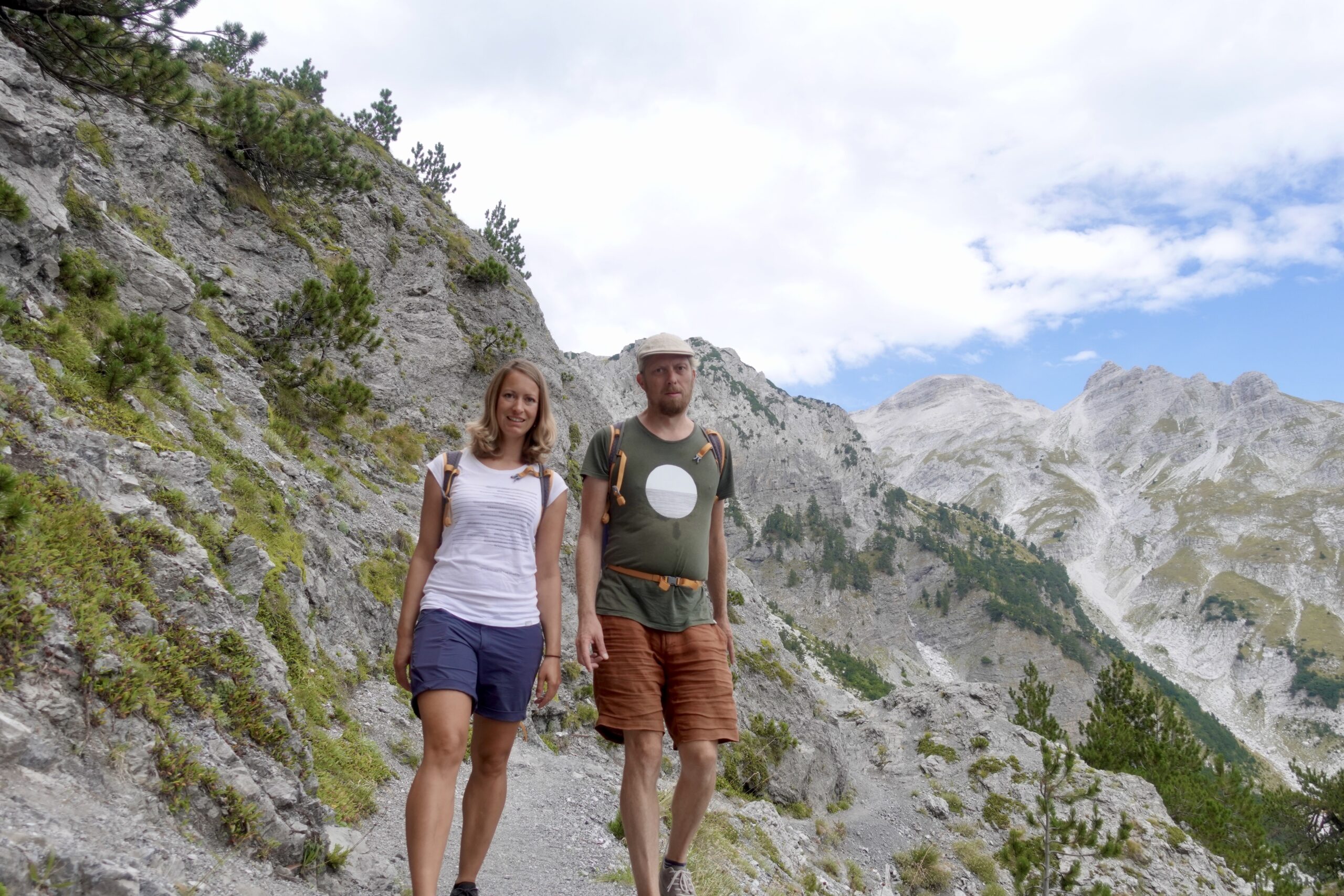
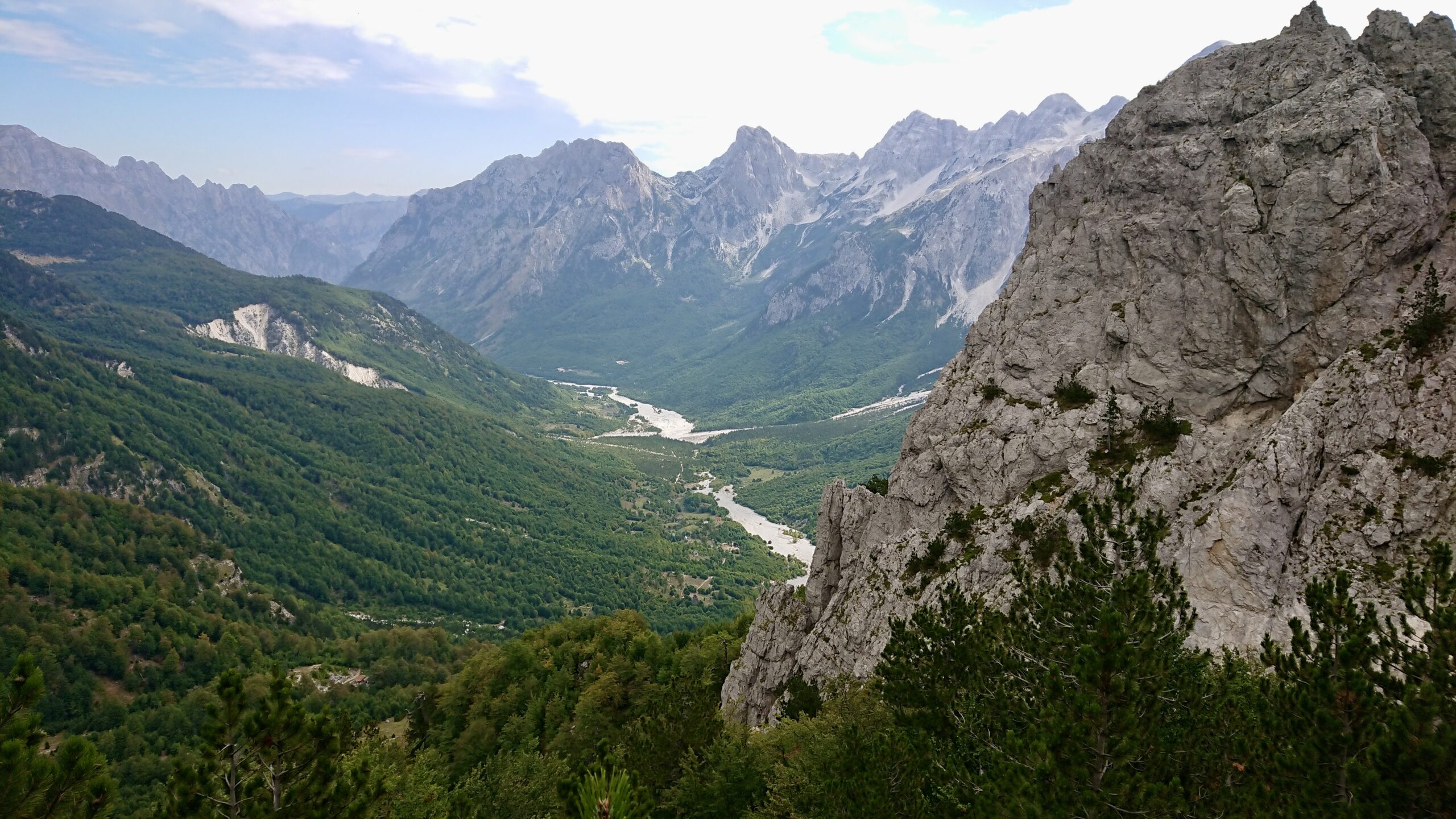
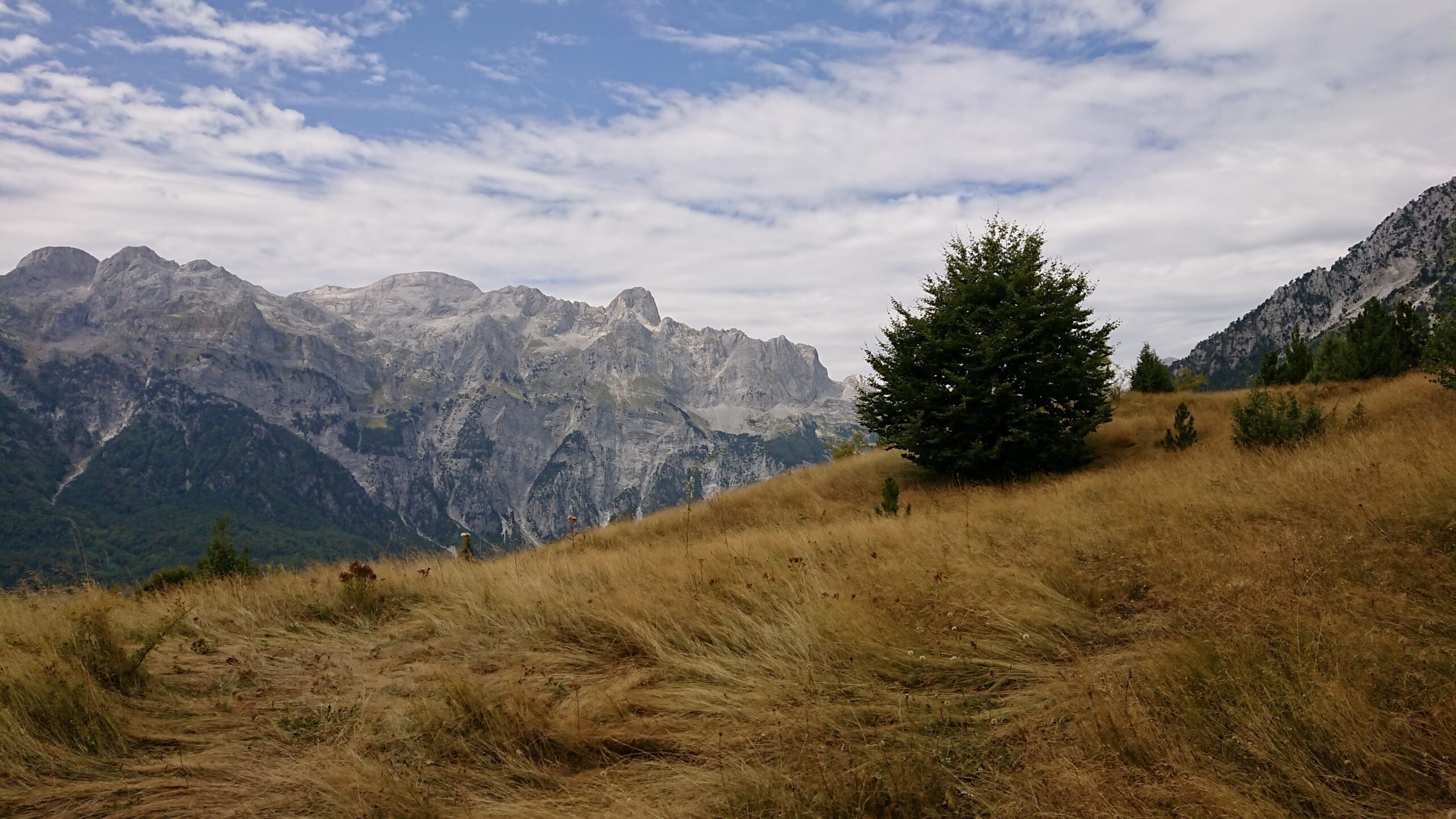
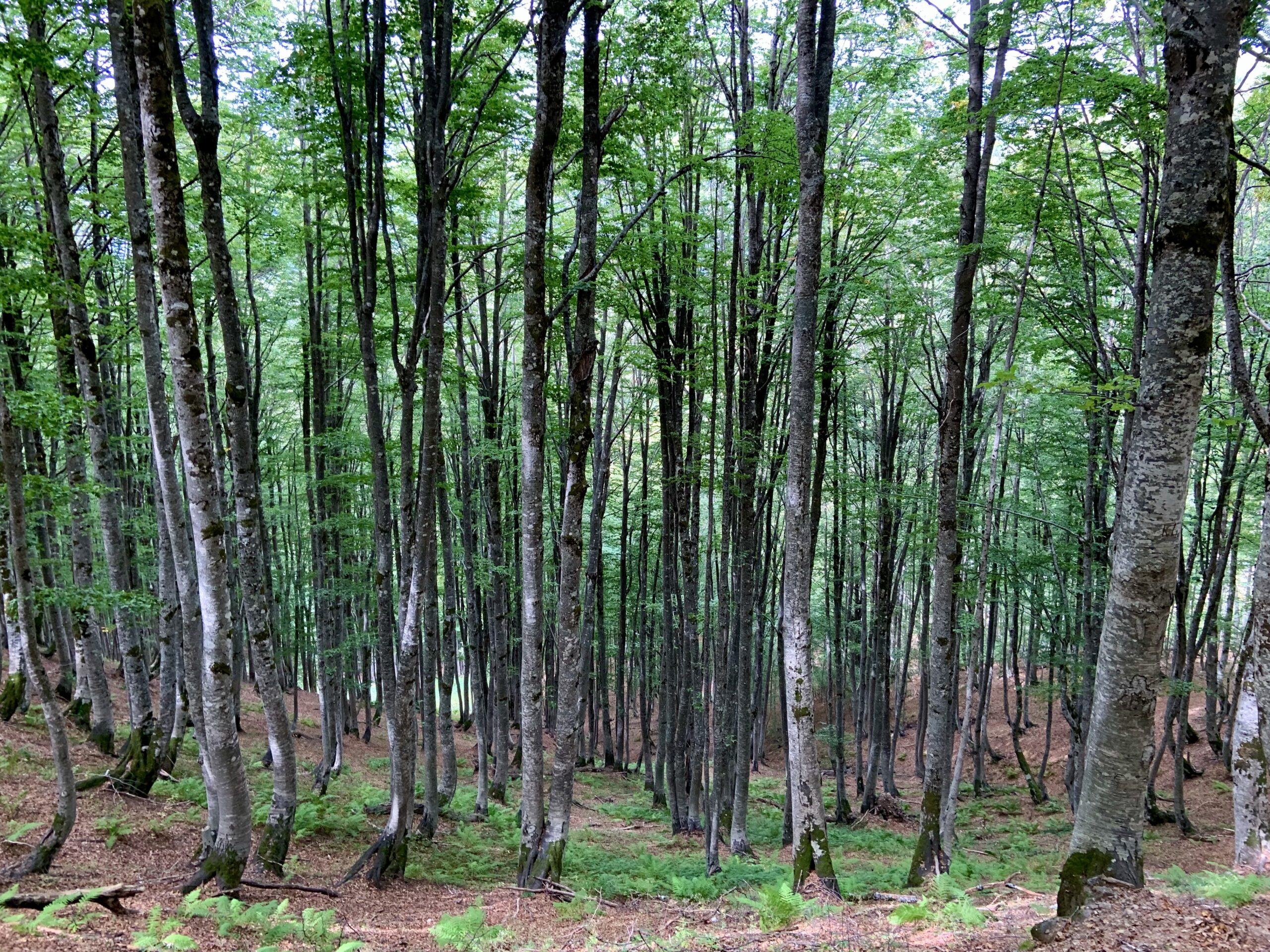
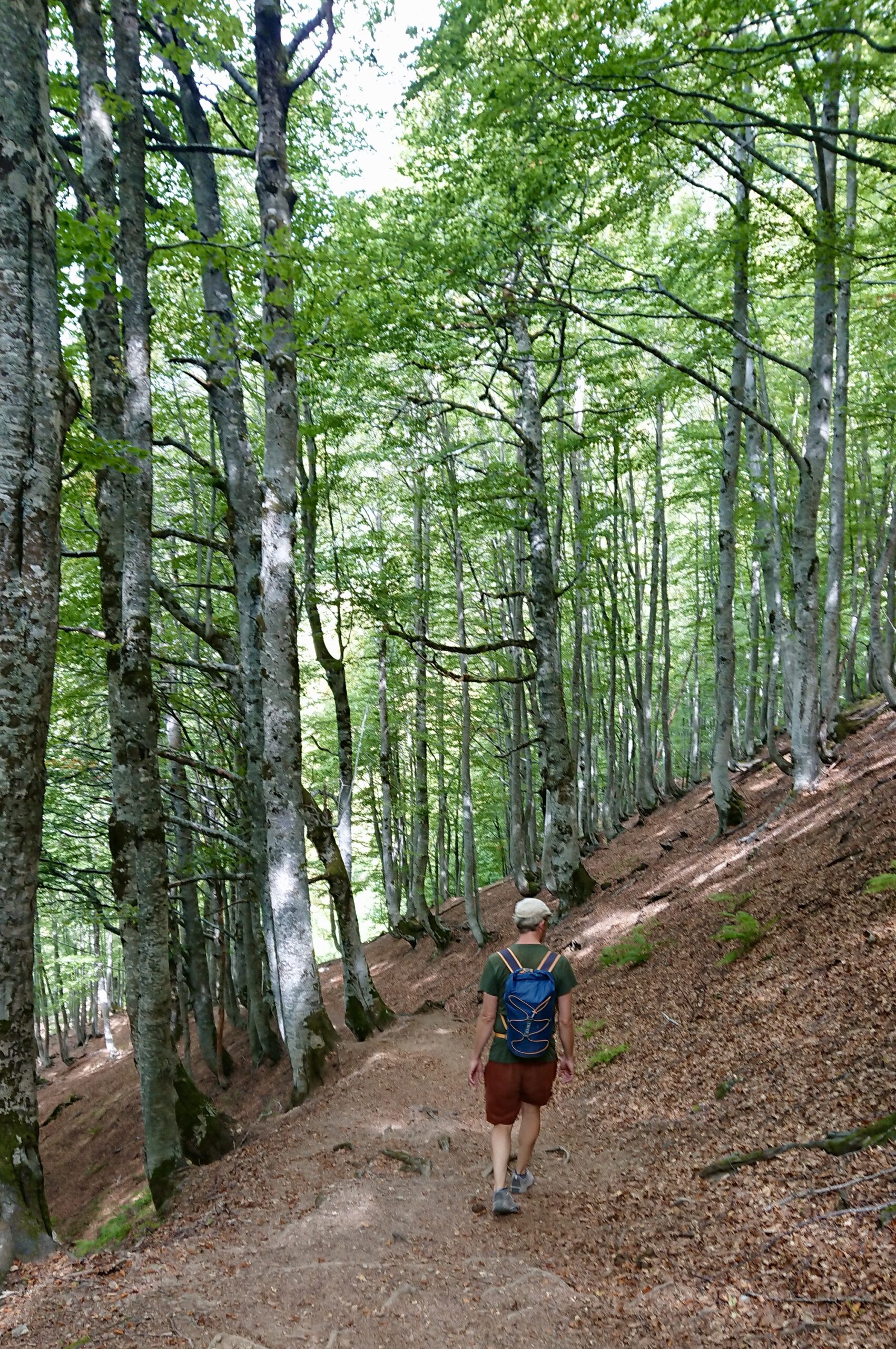
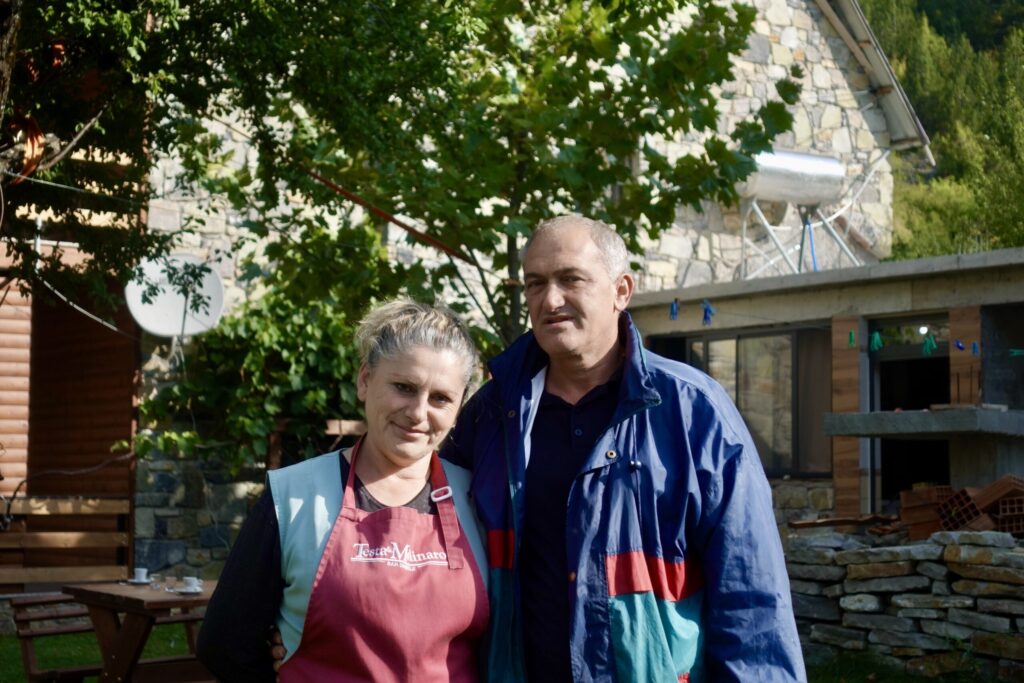
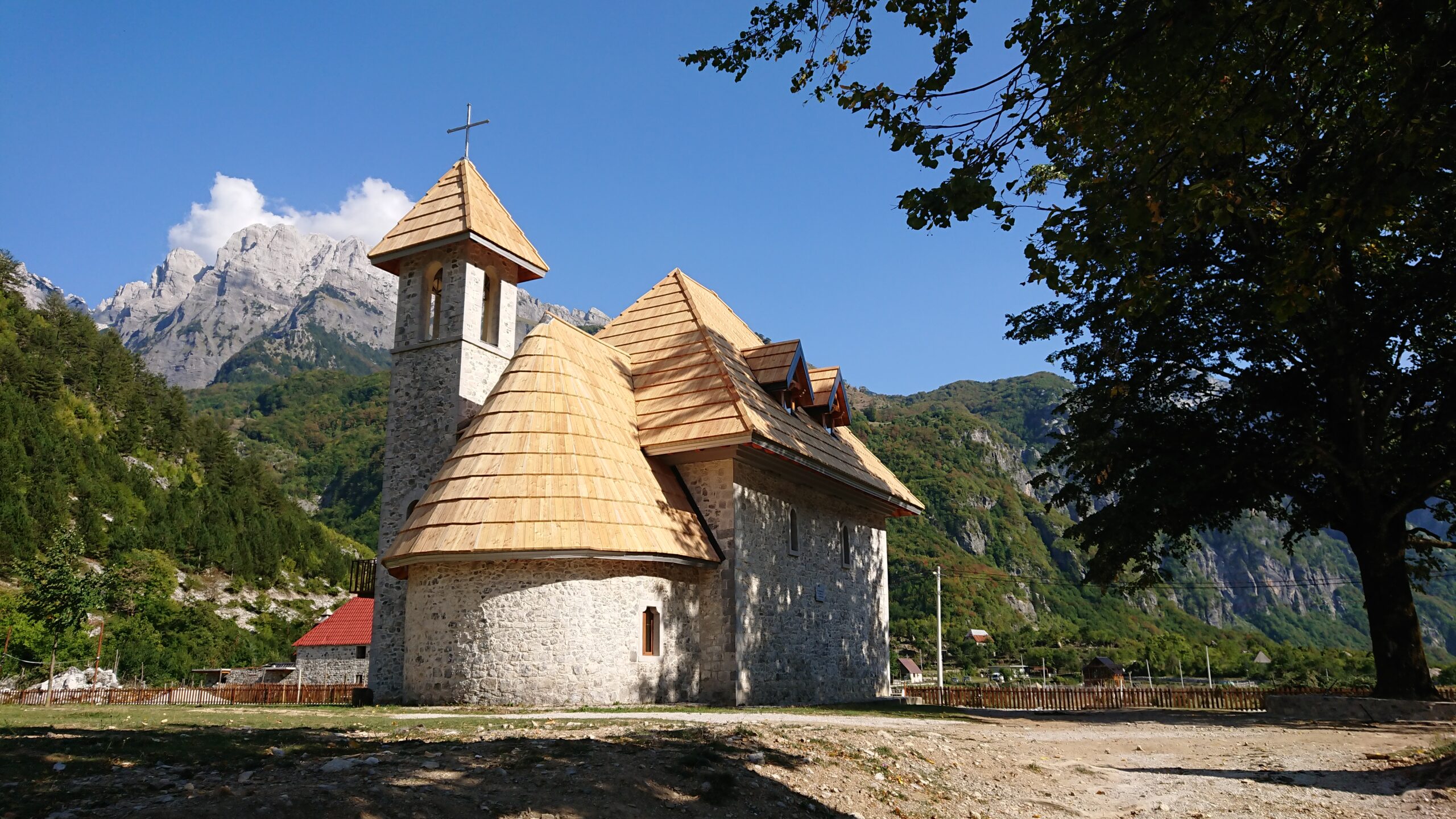
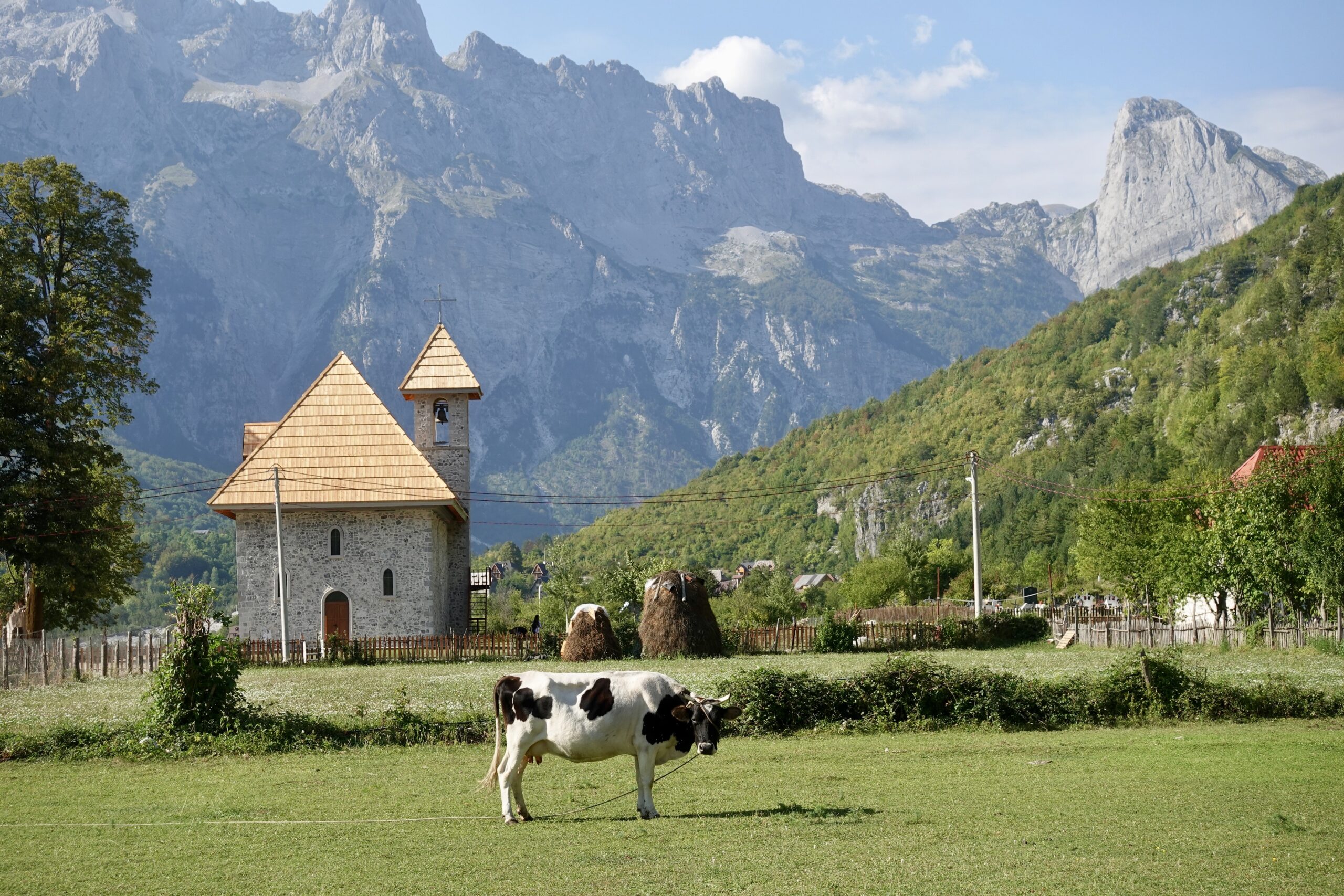
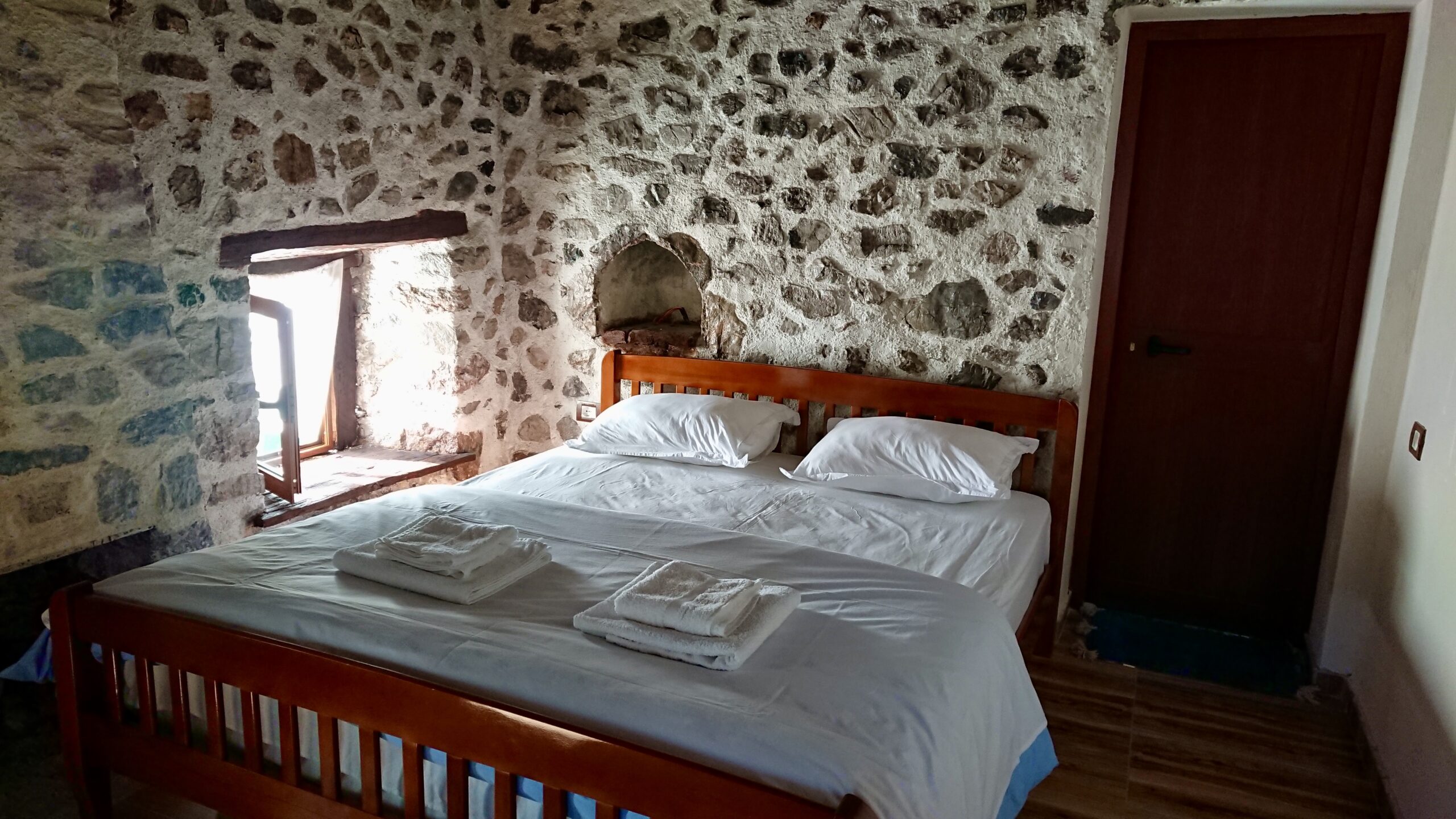
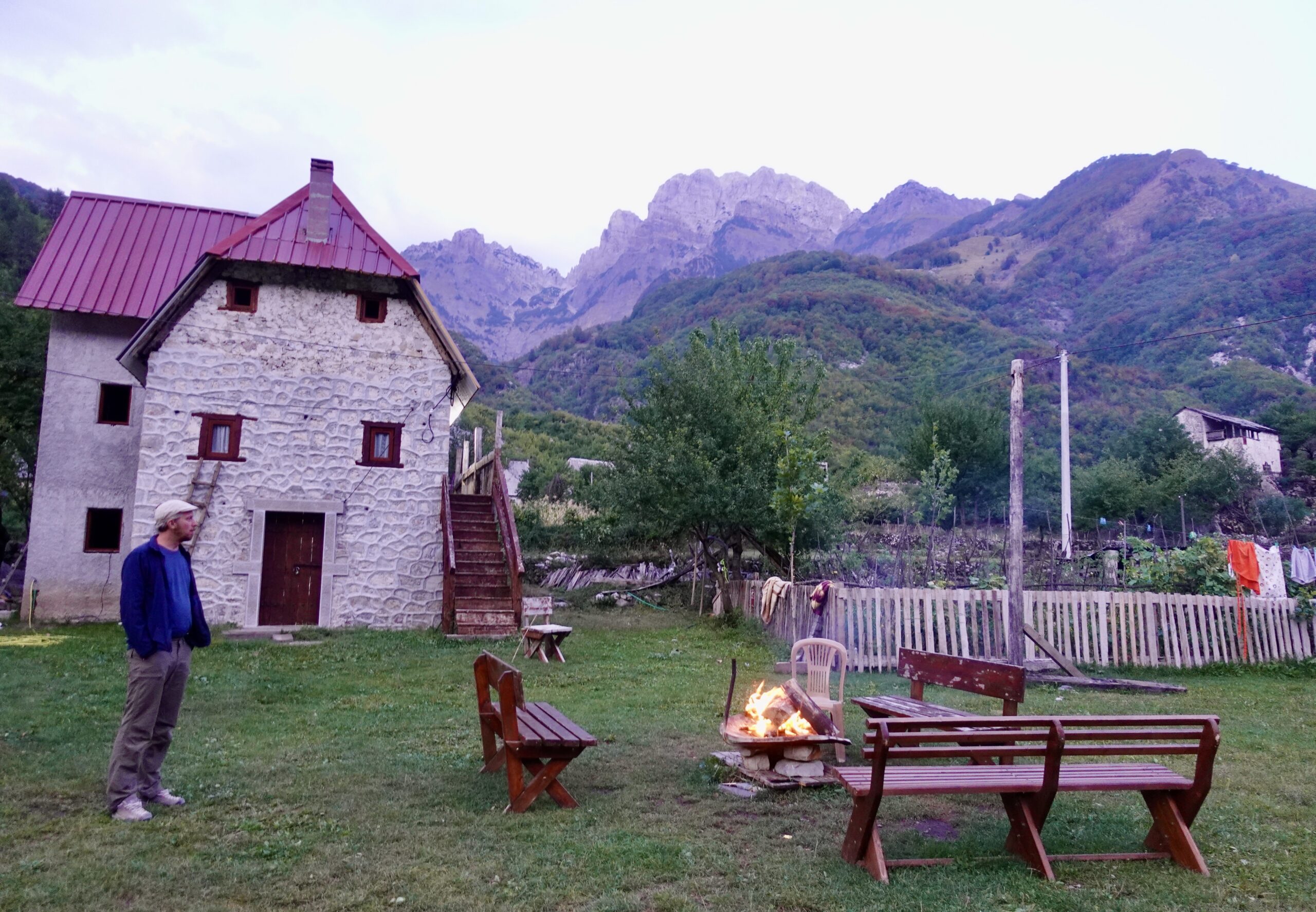
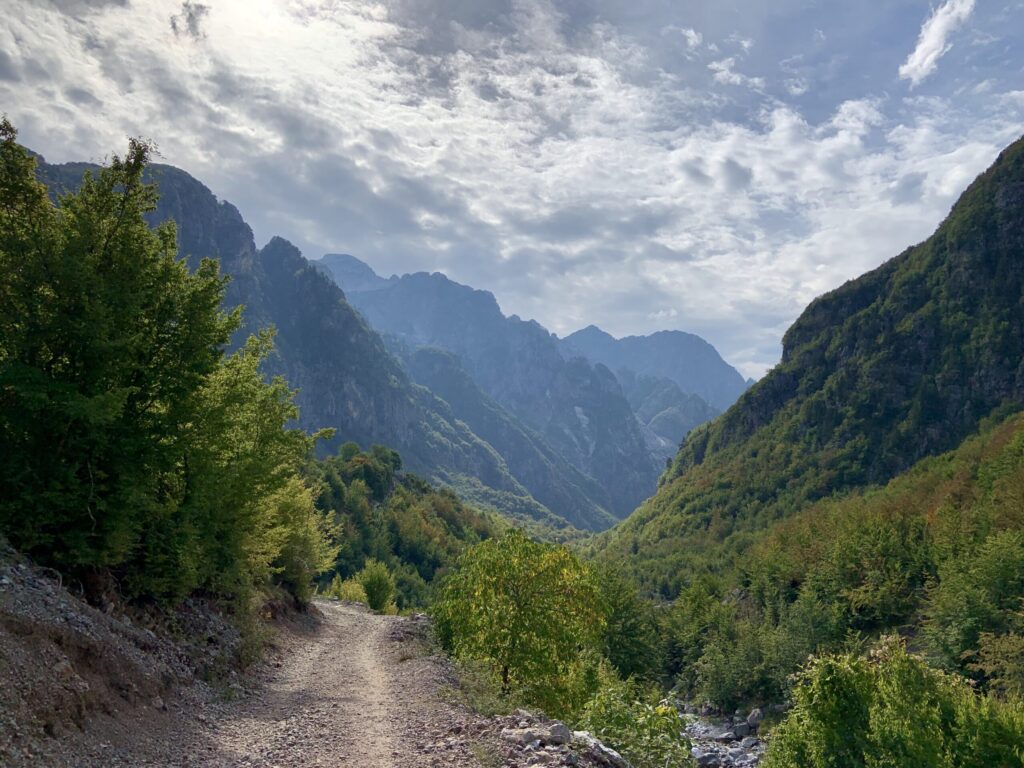
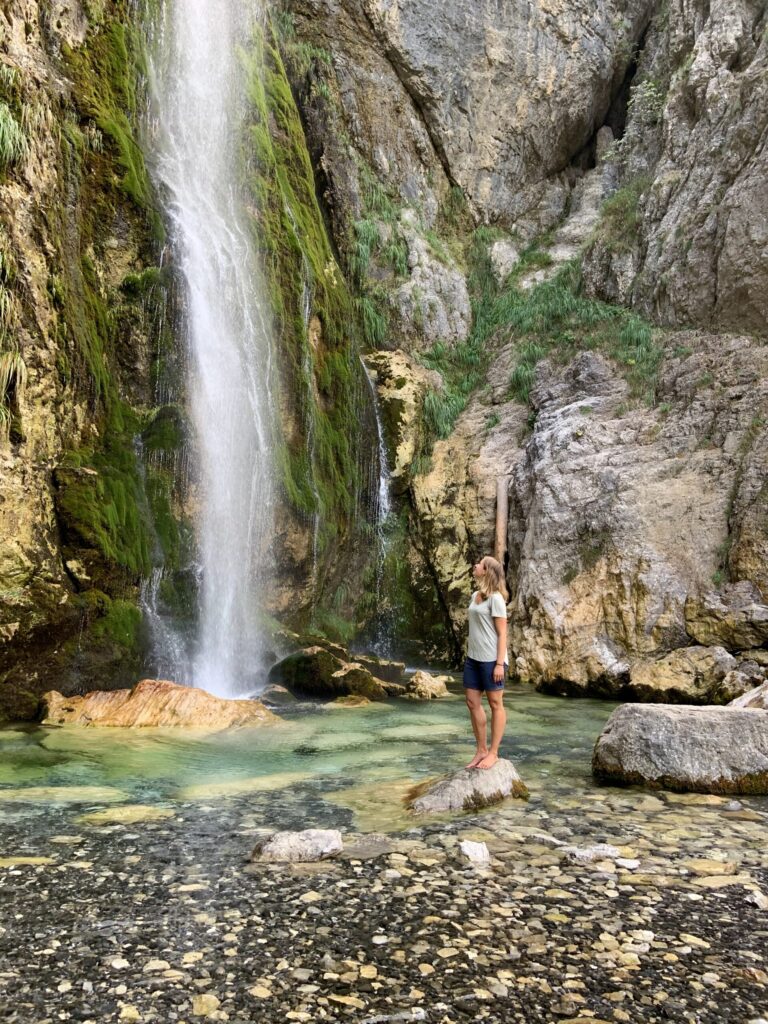
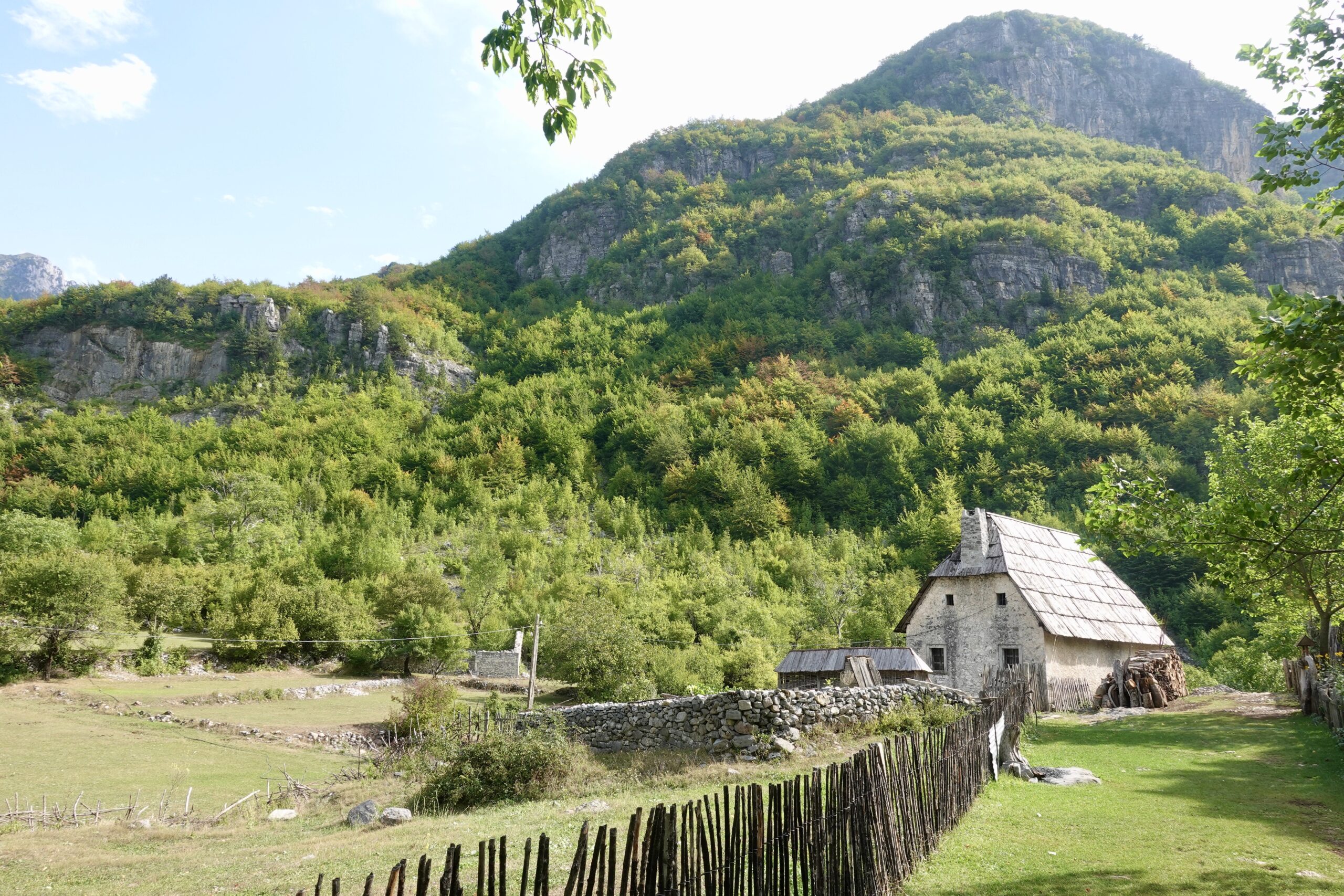
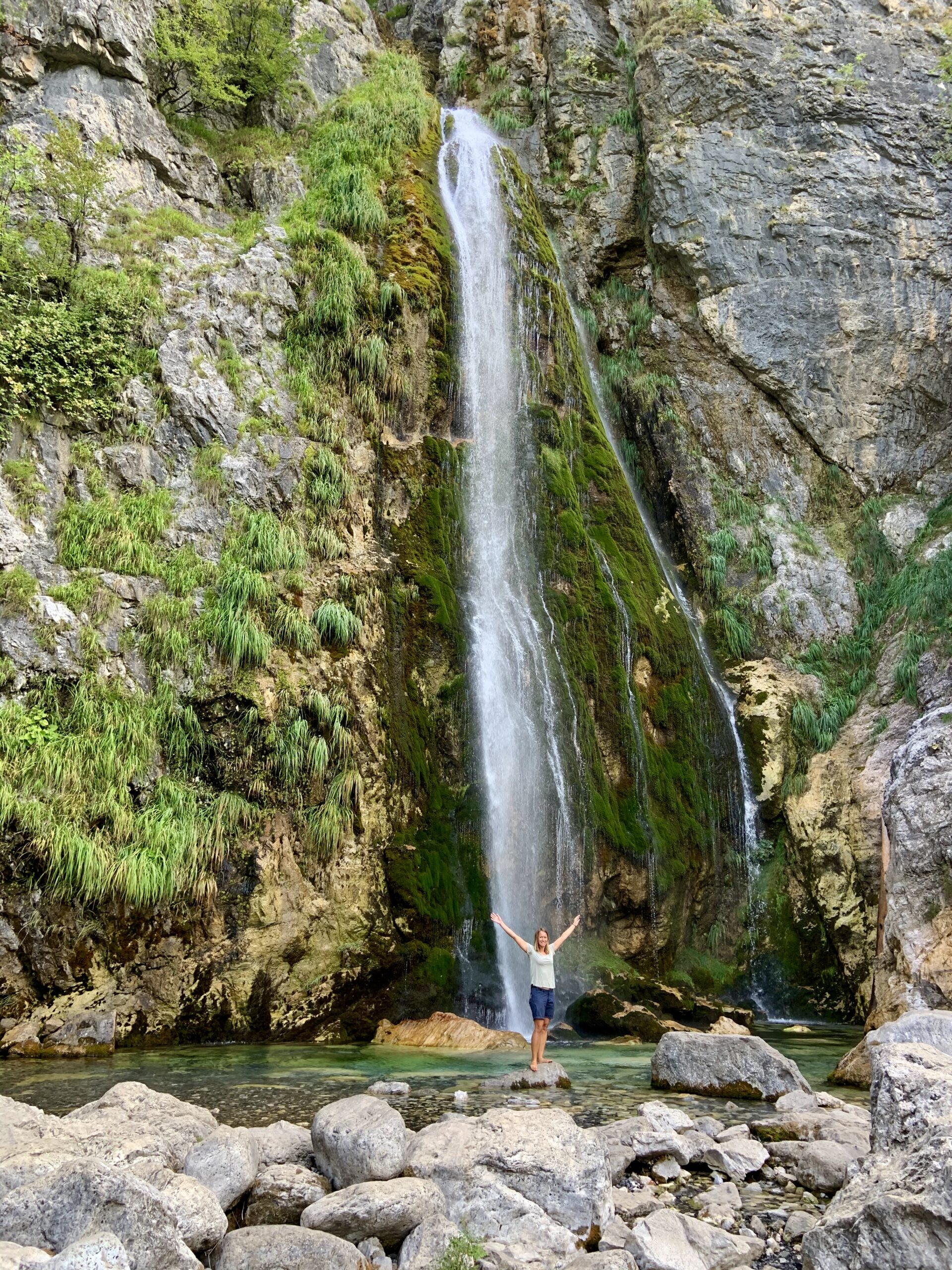
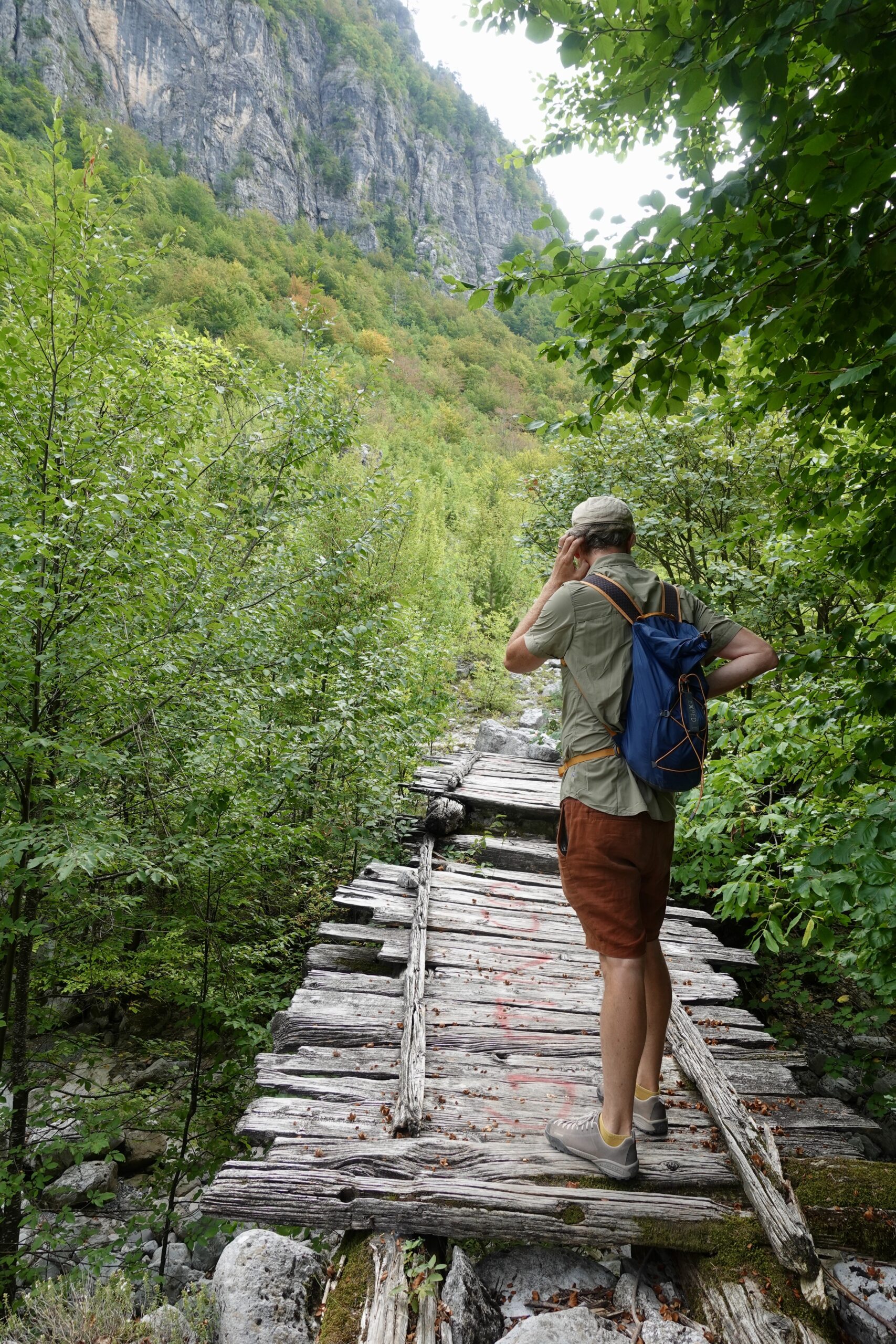
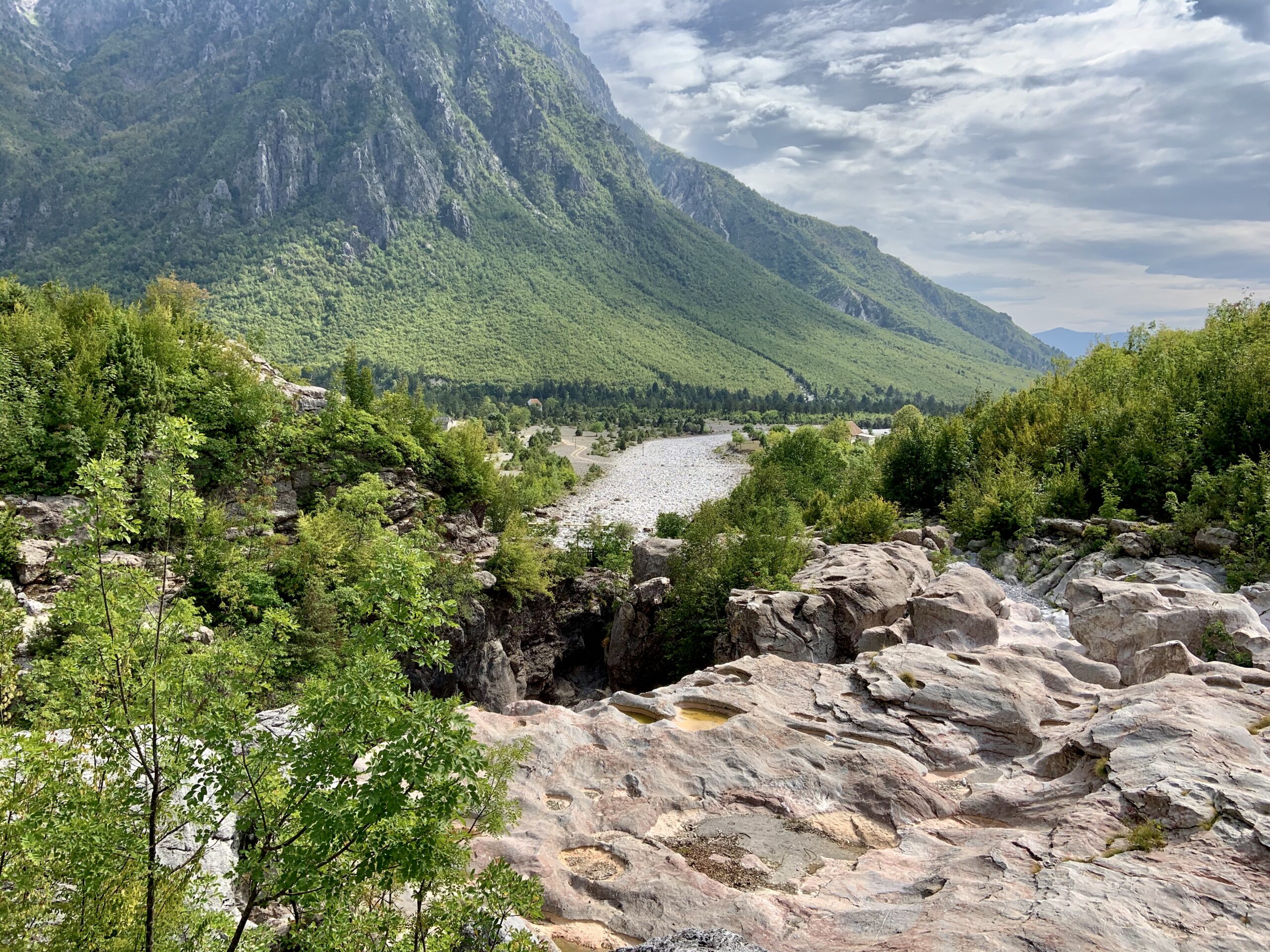
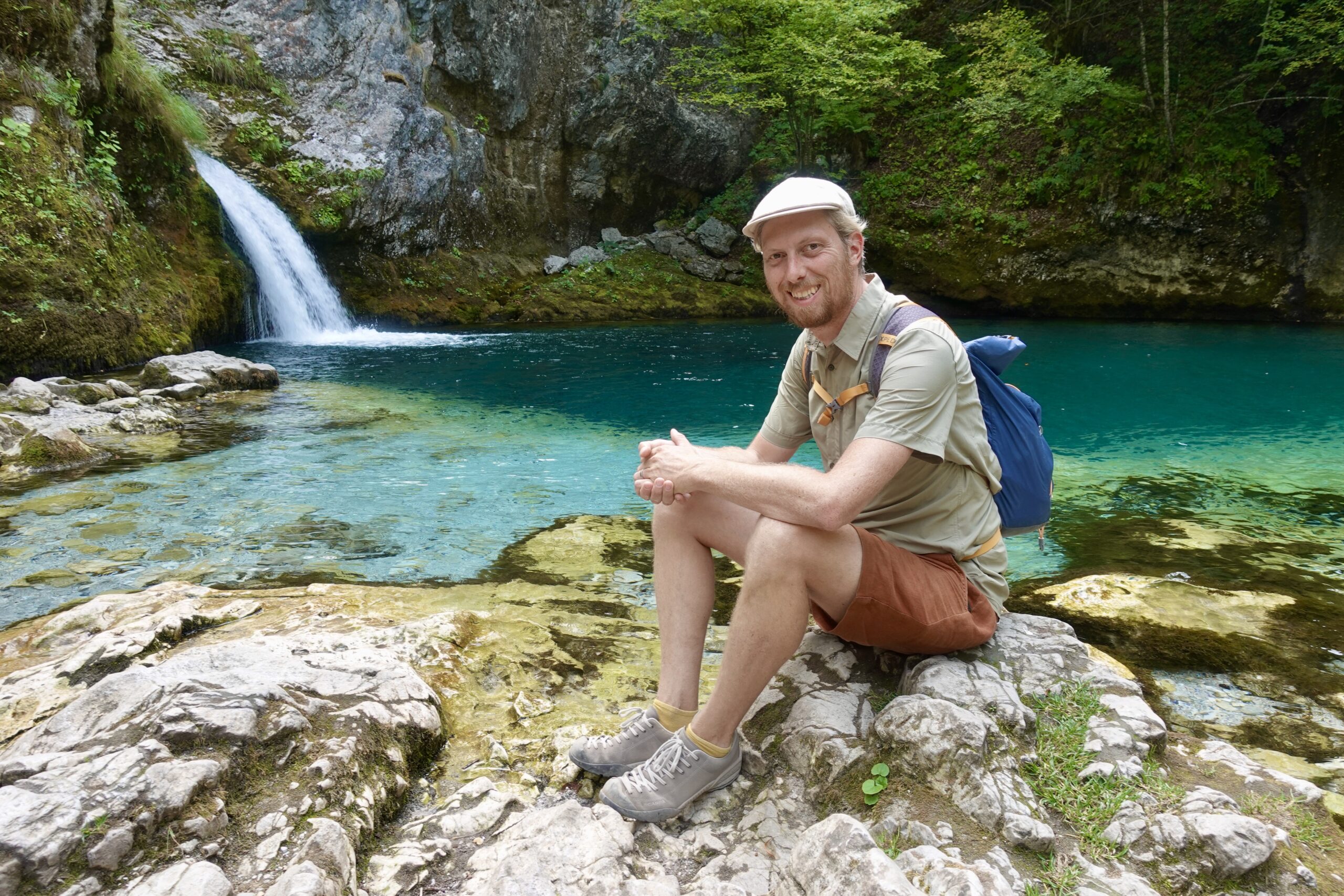
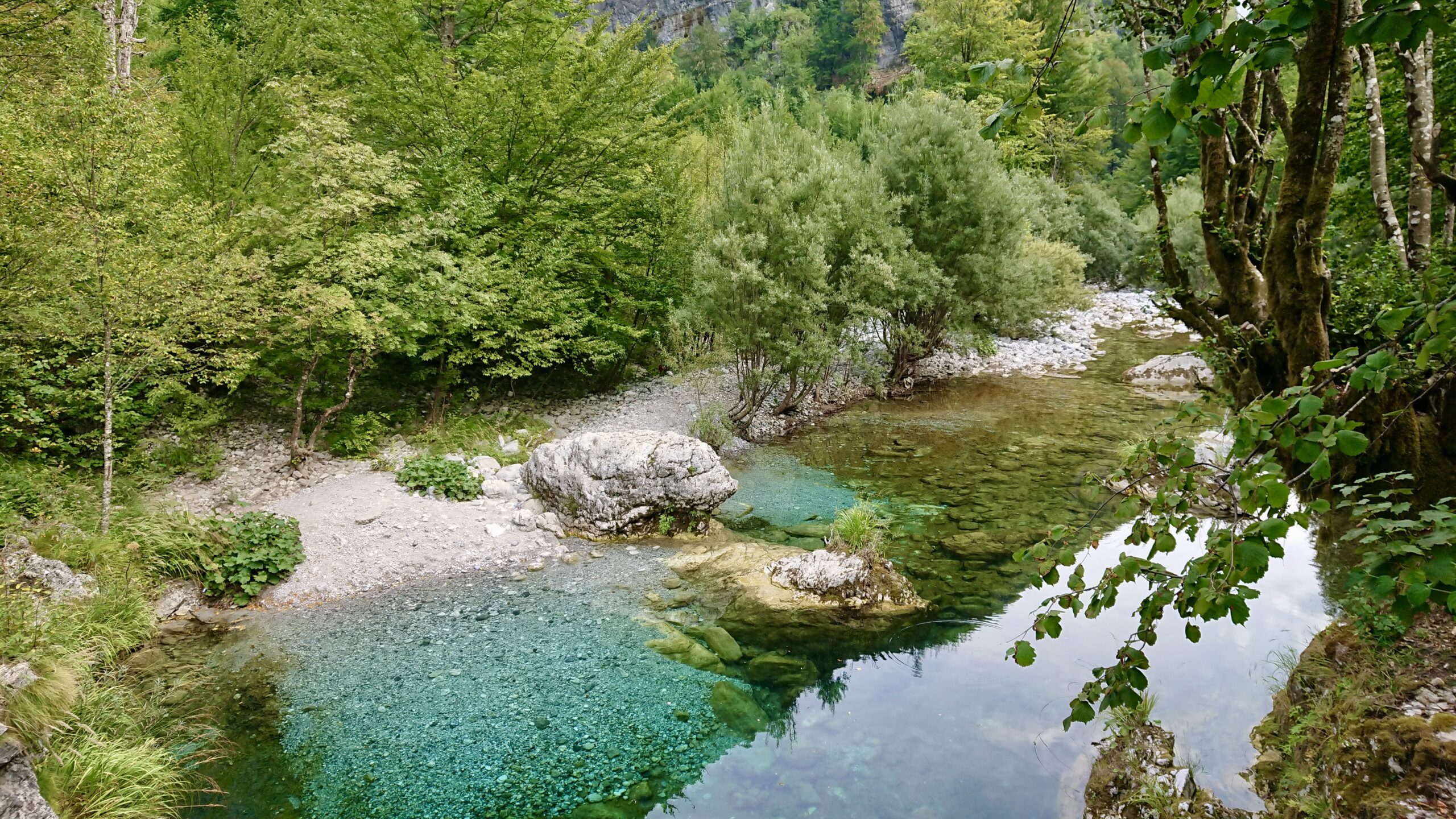
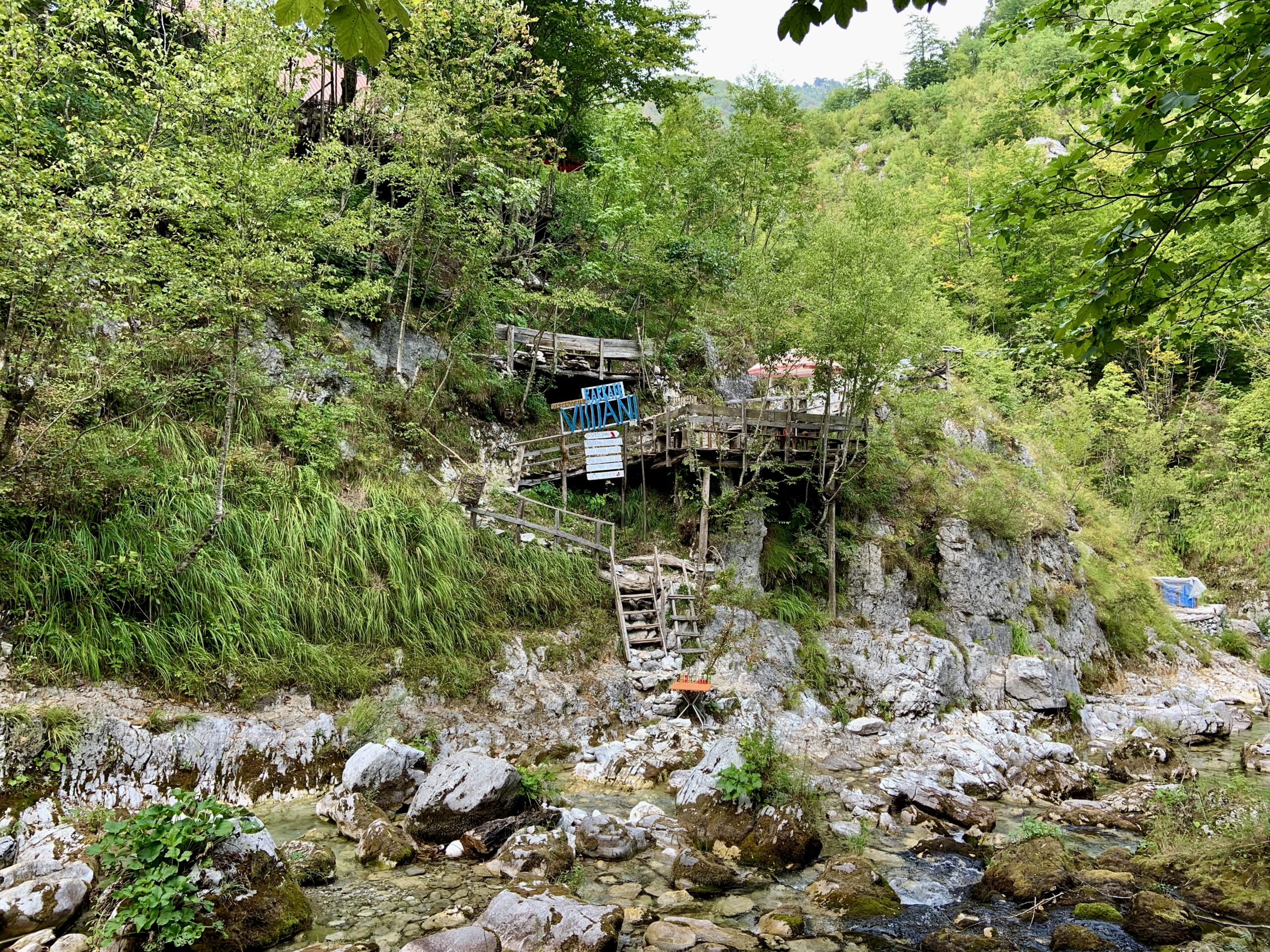
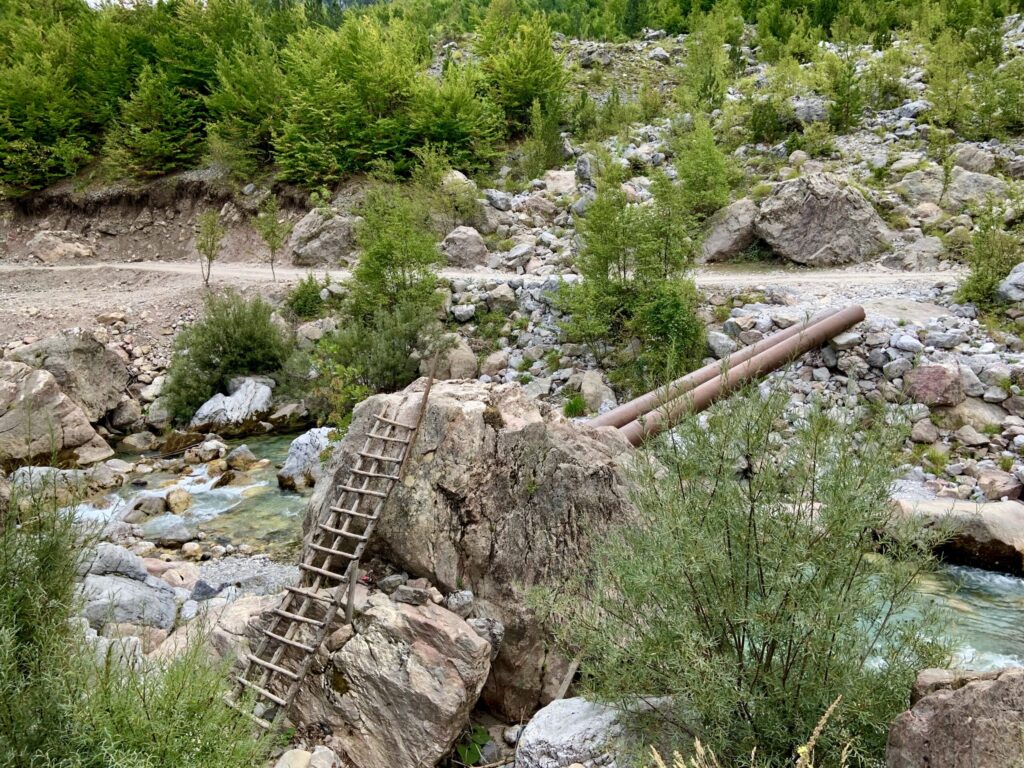
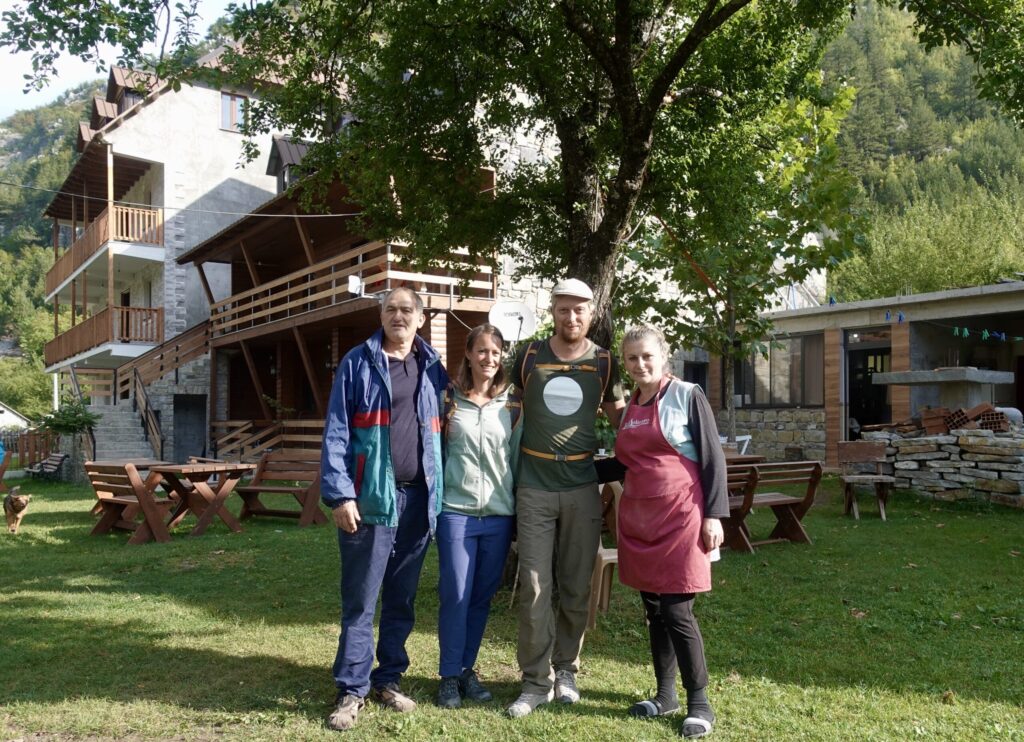
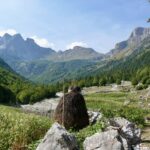
Leave a Reply